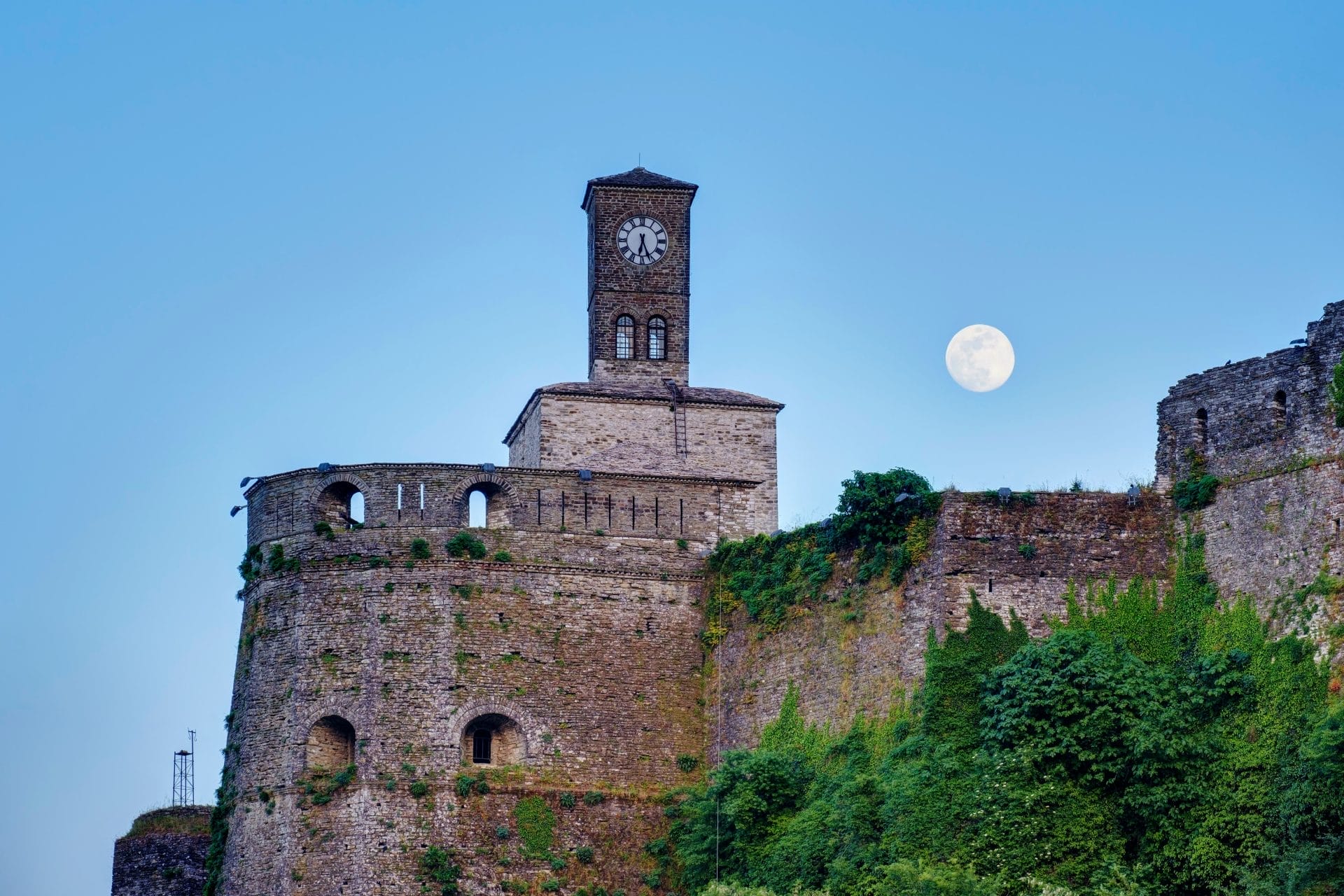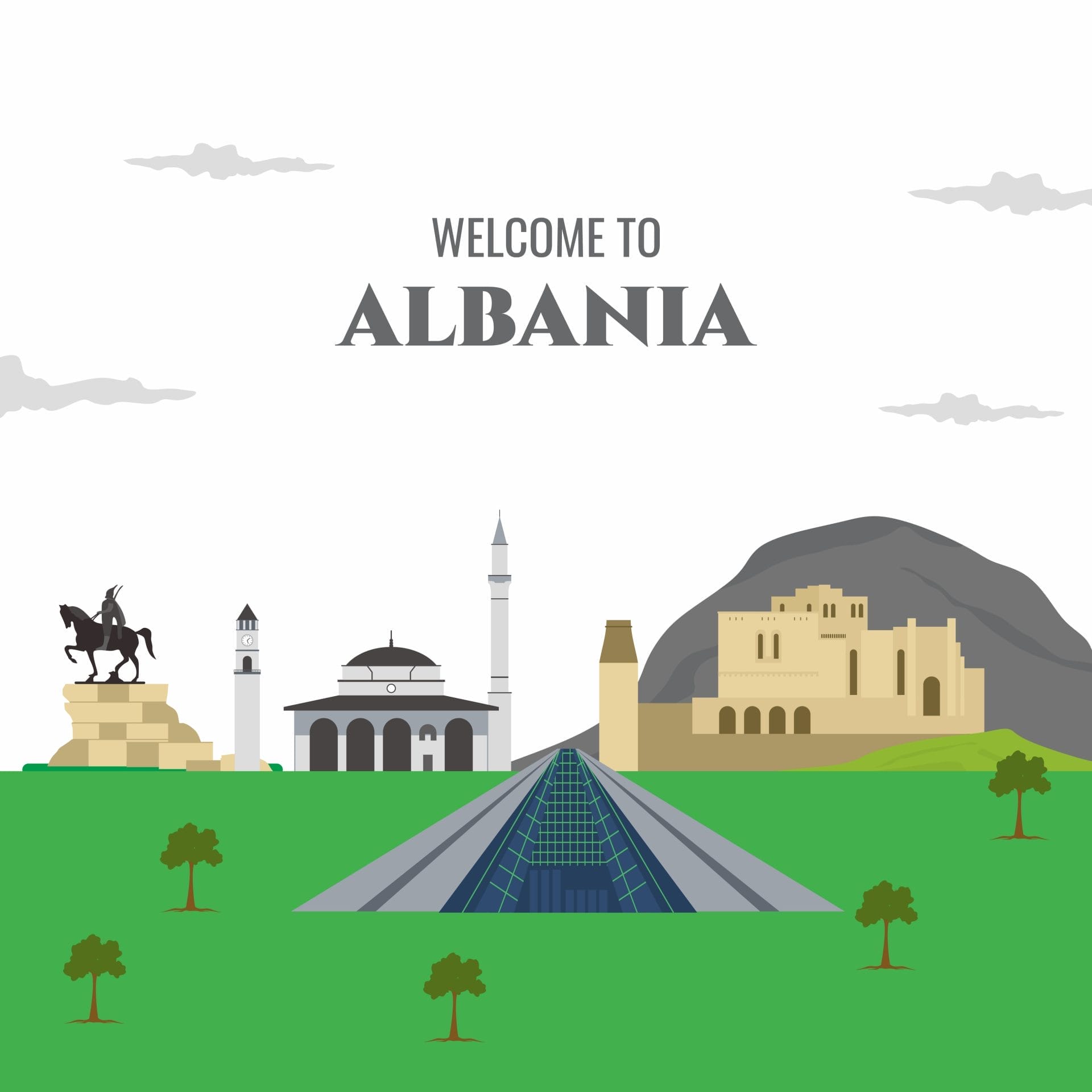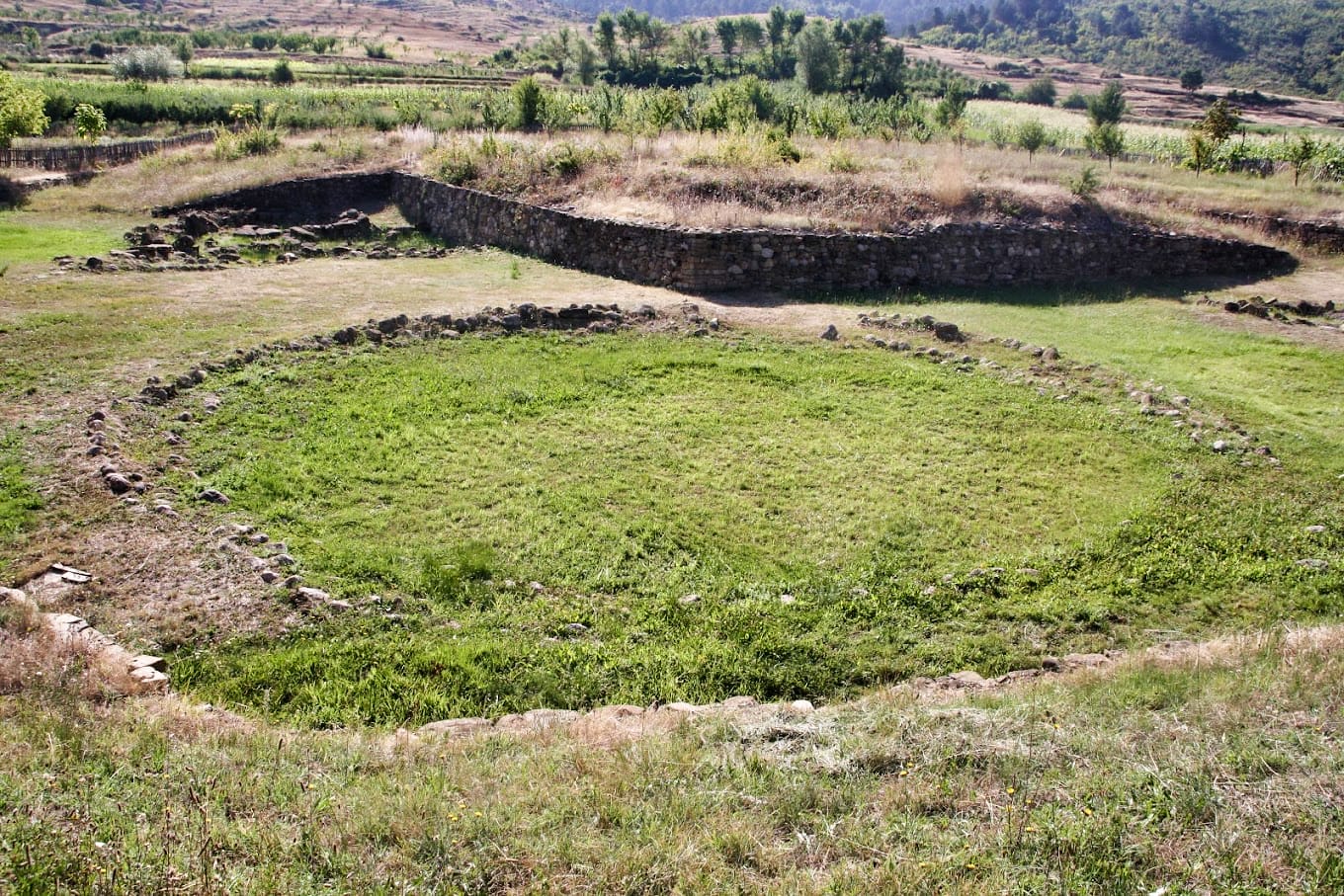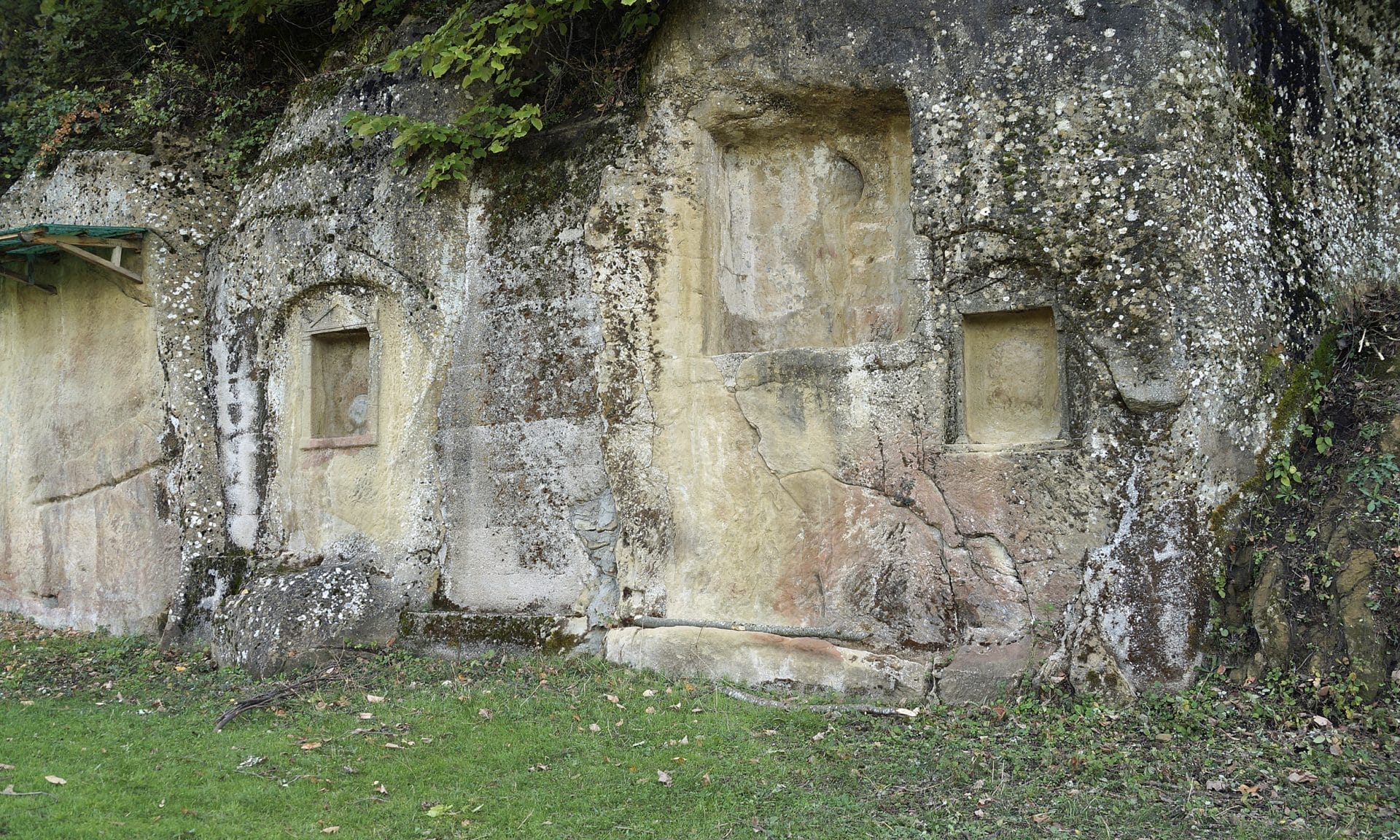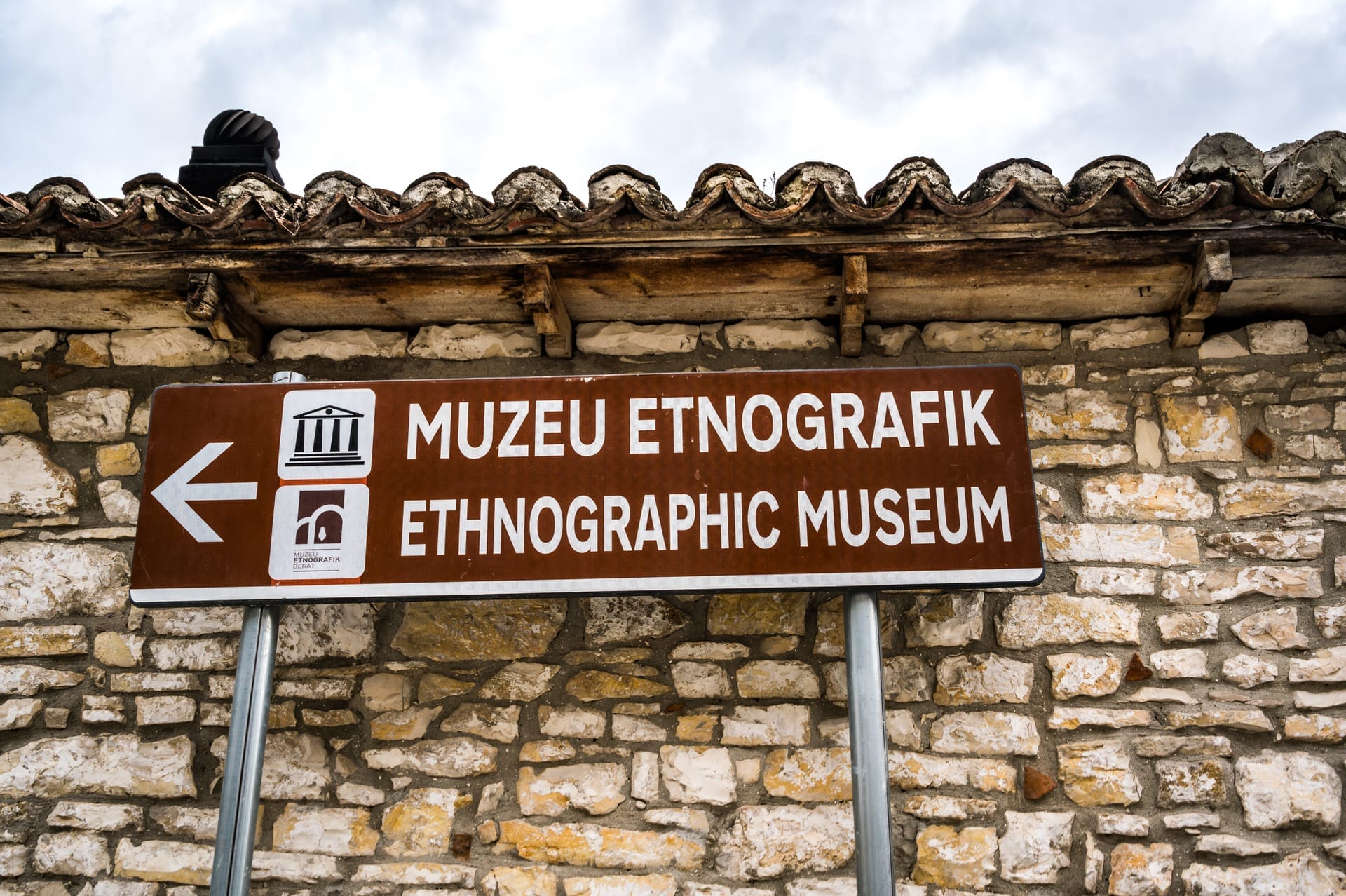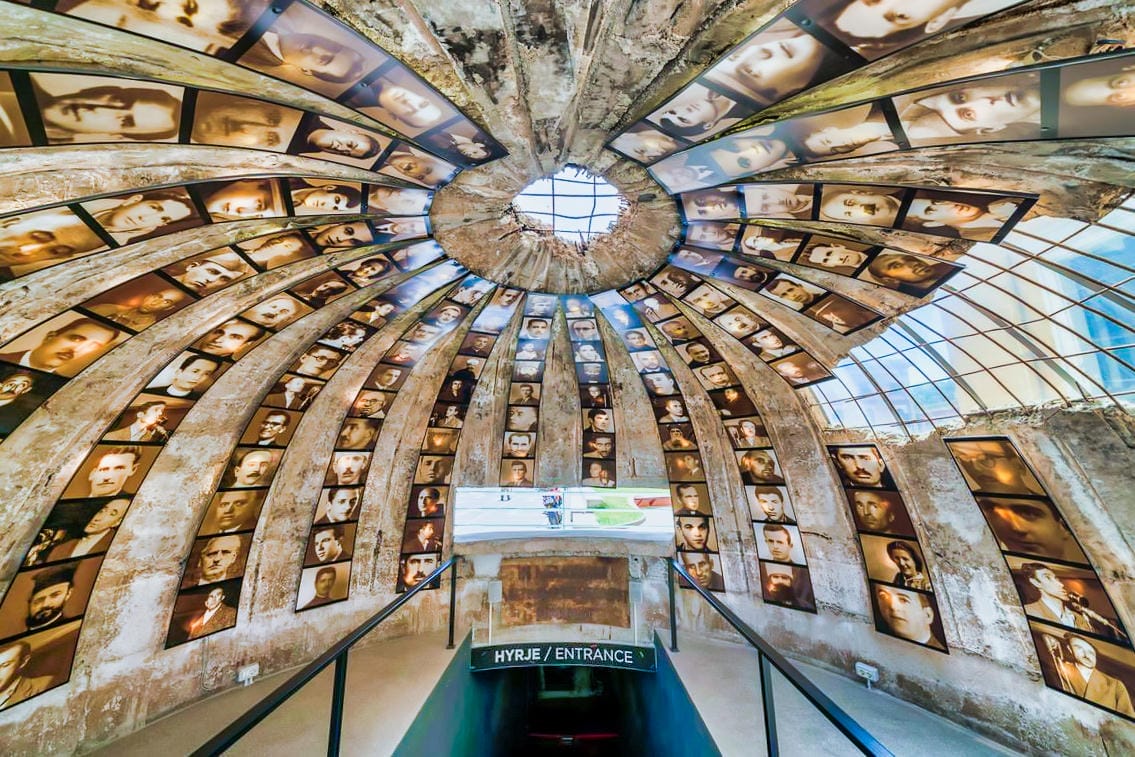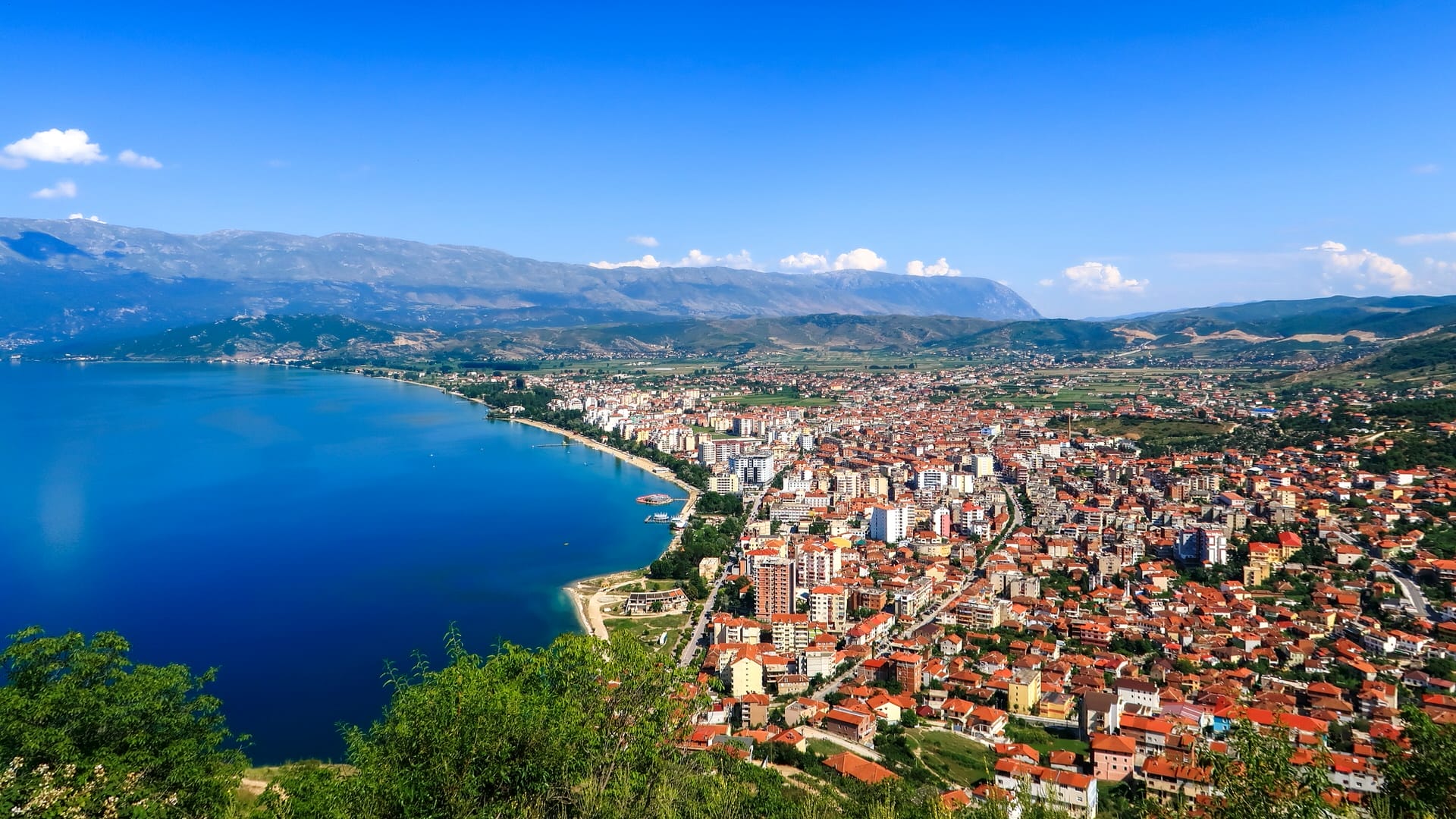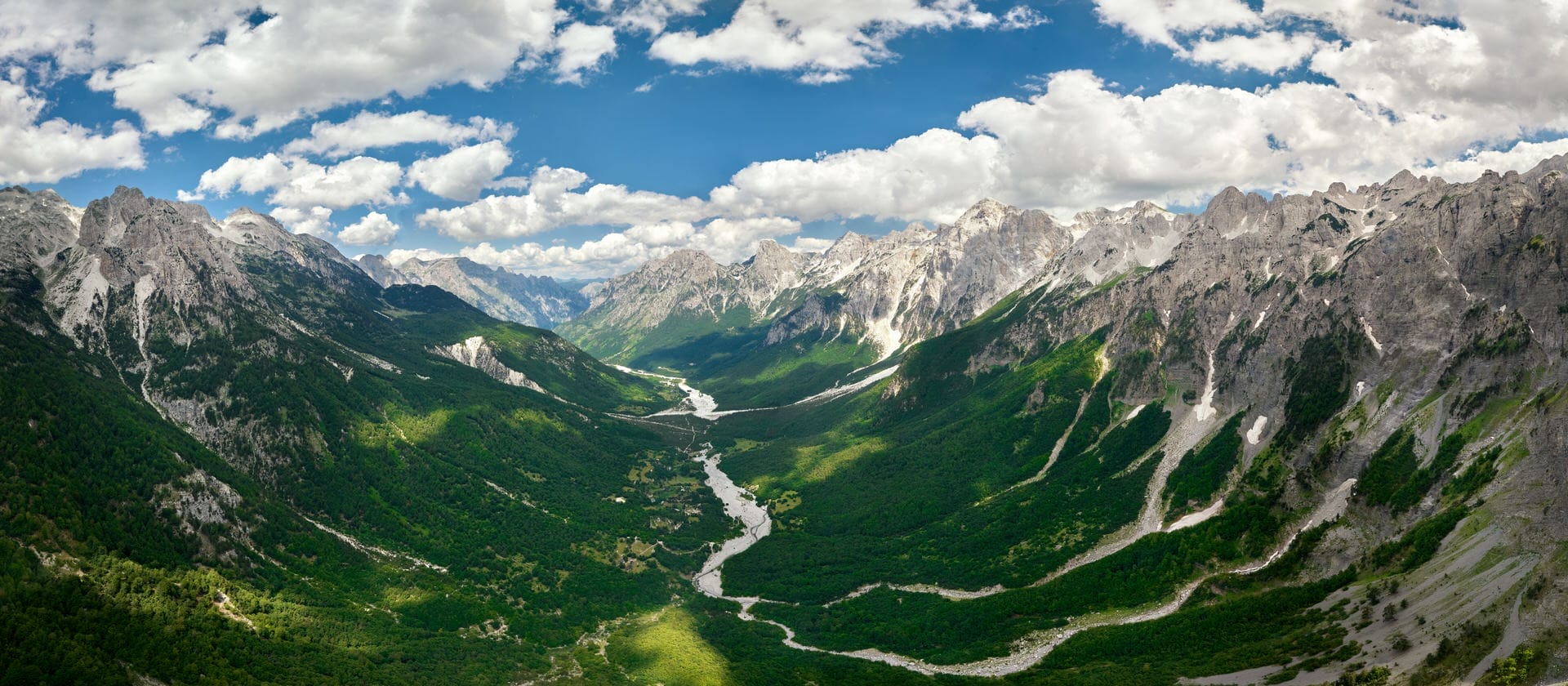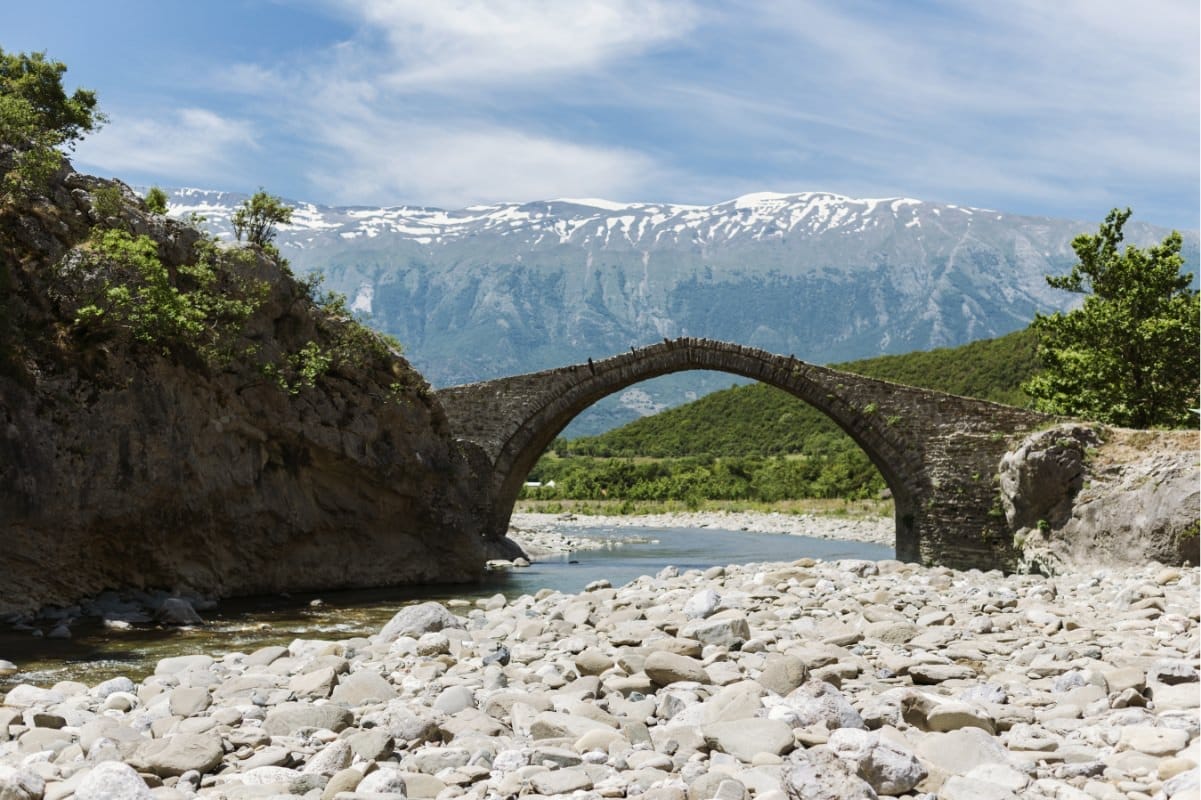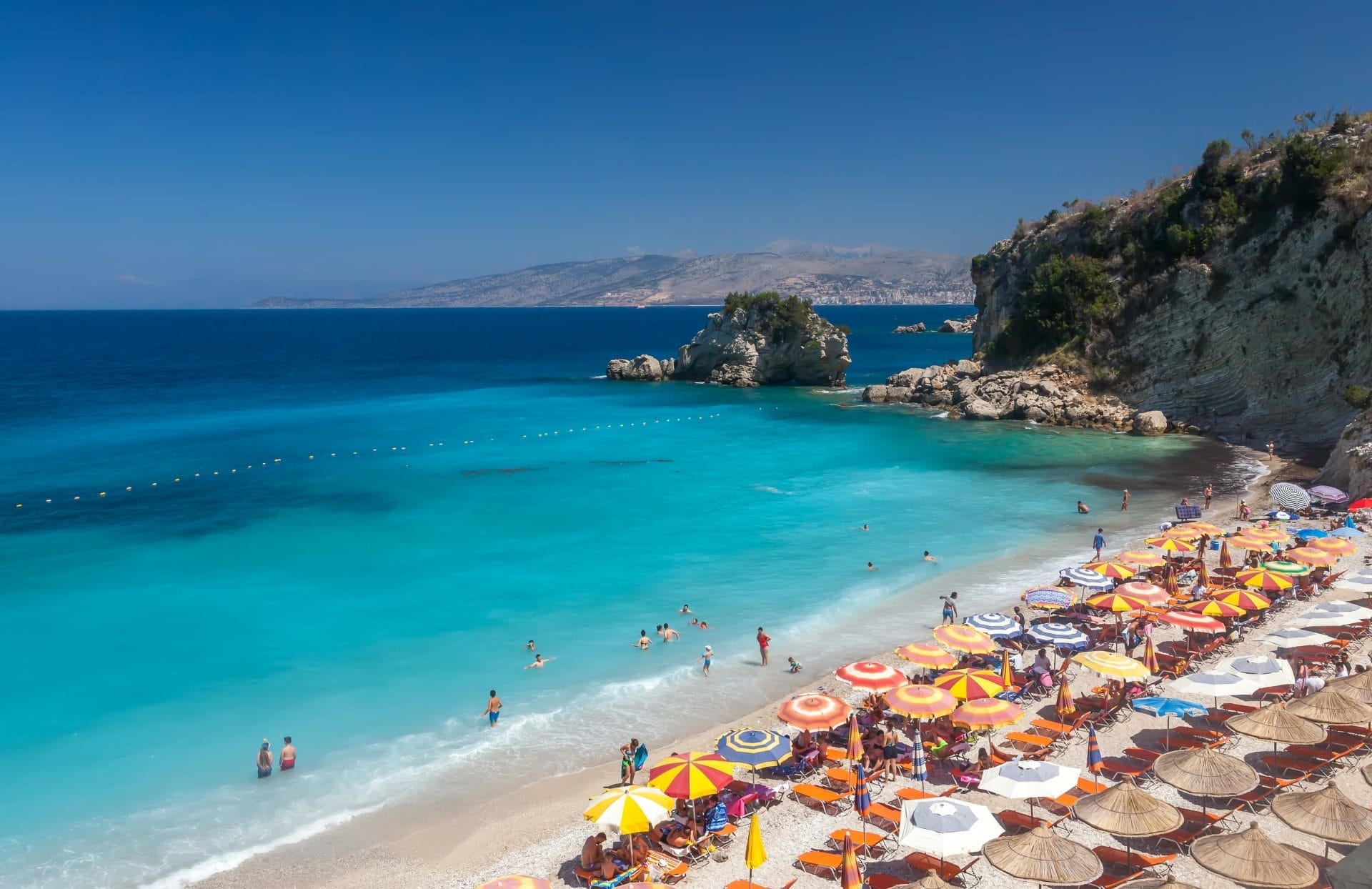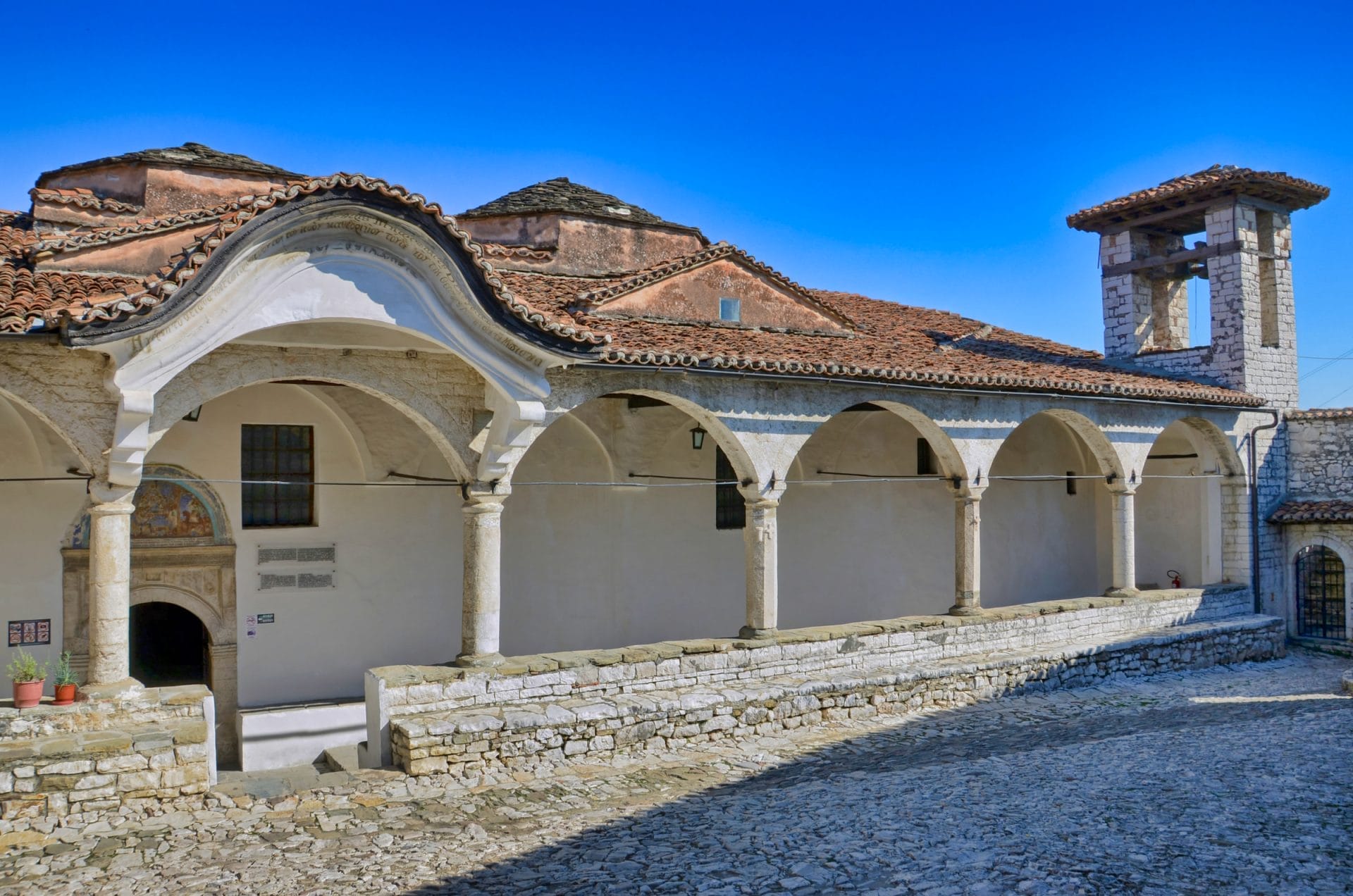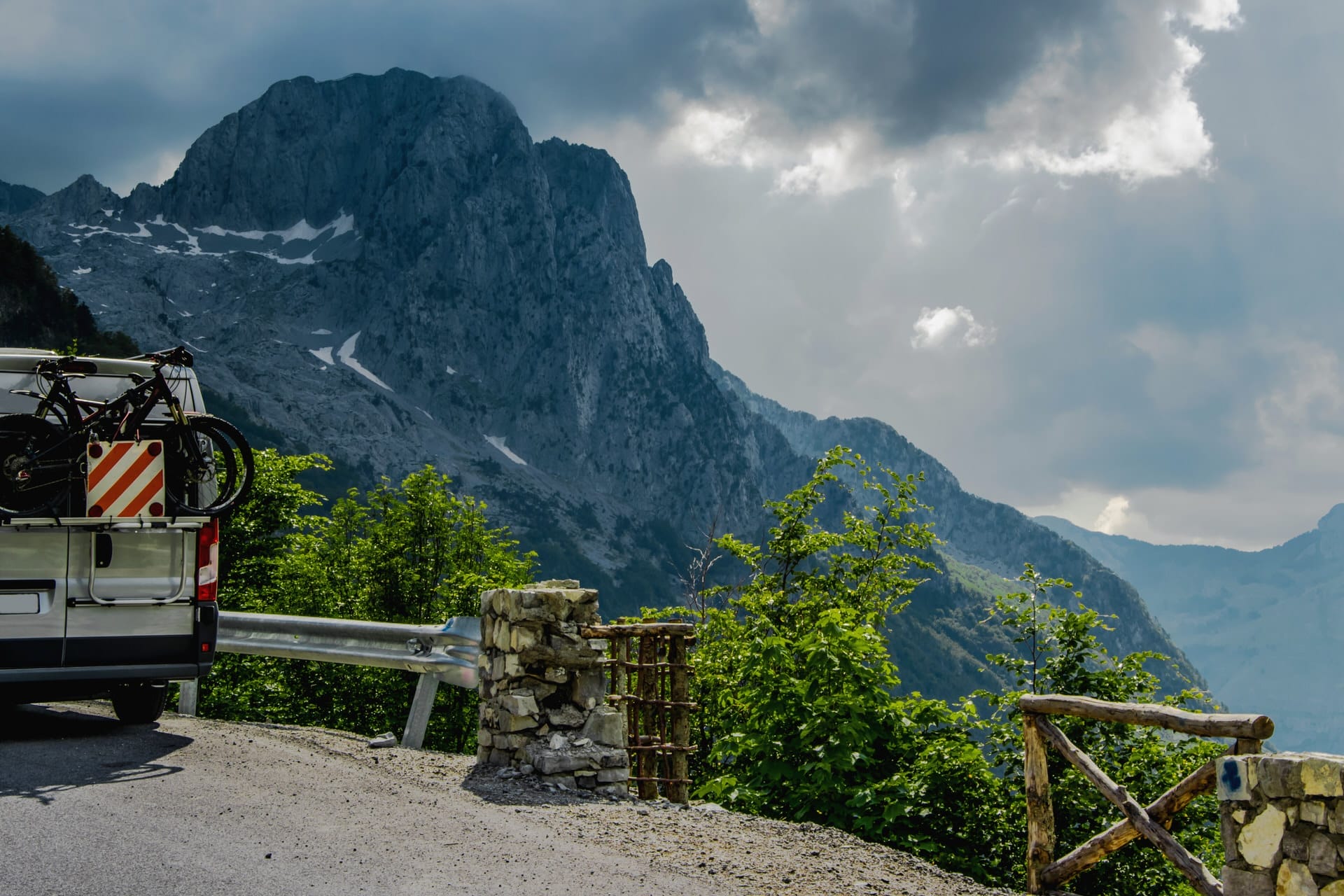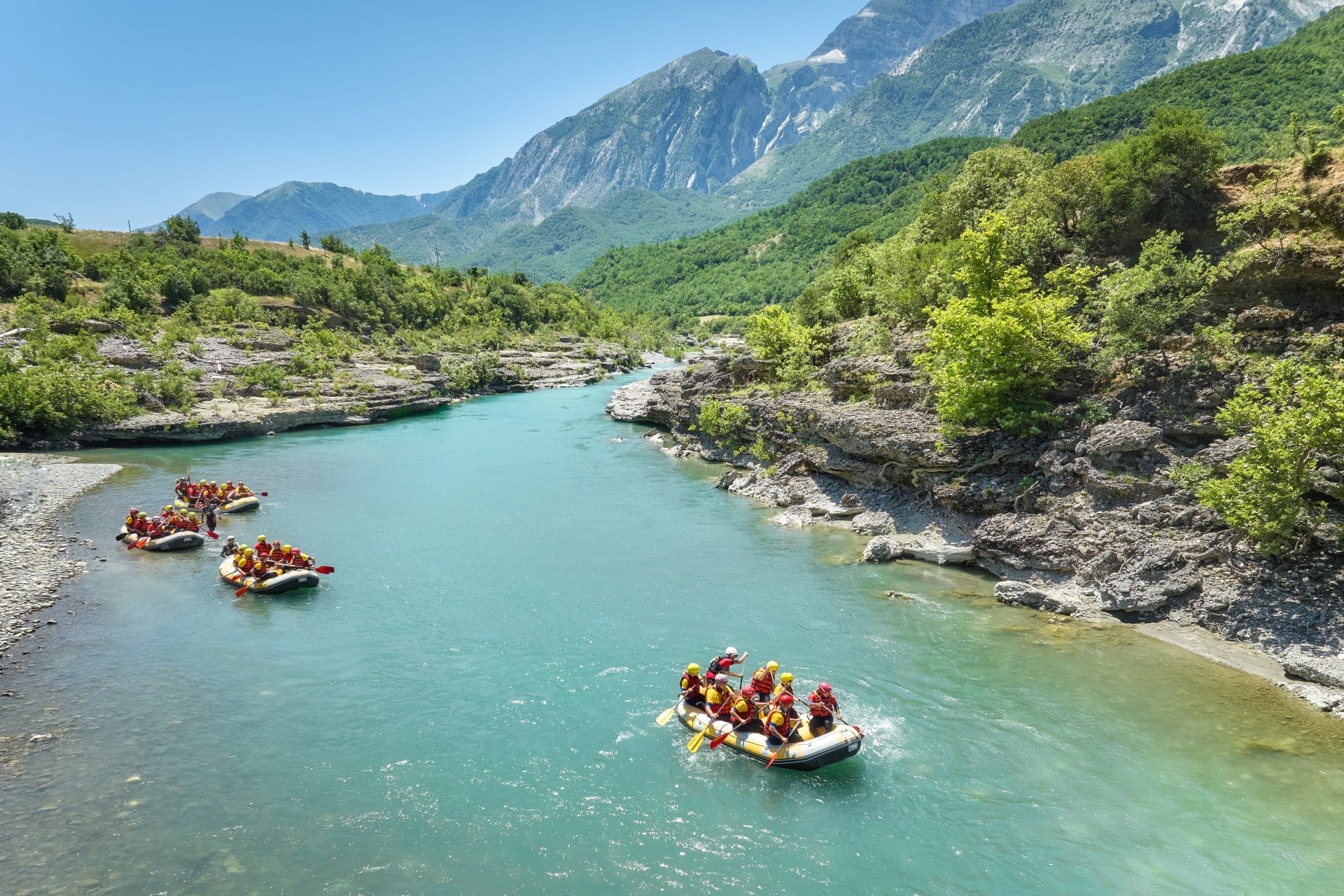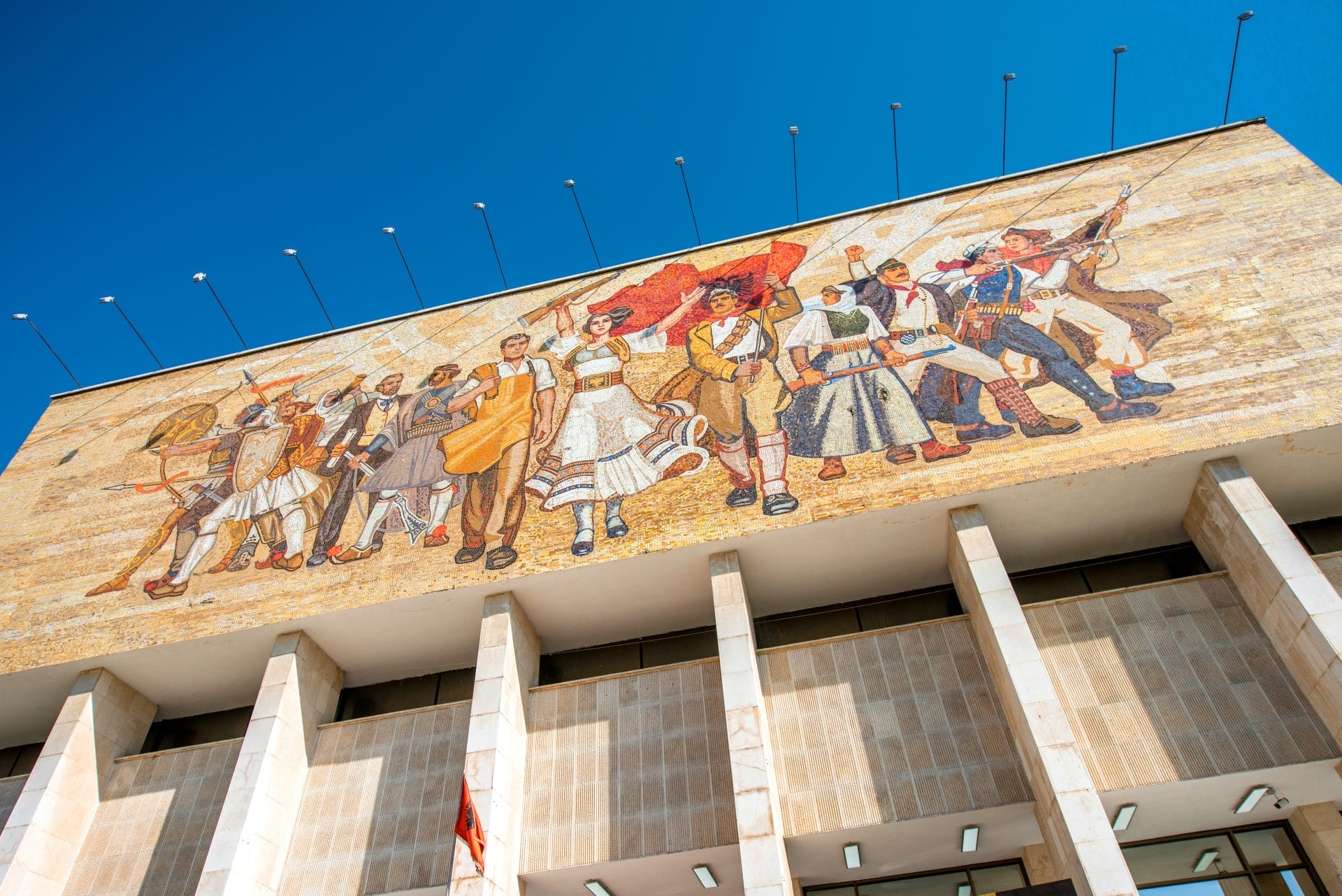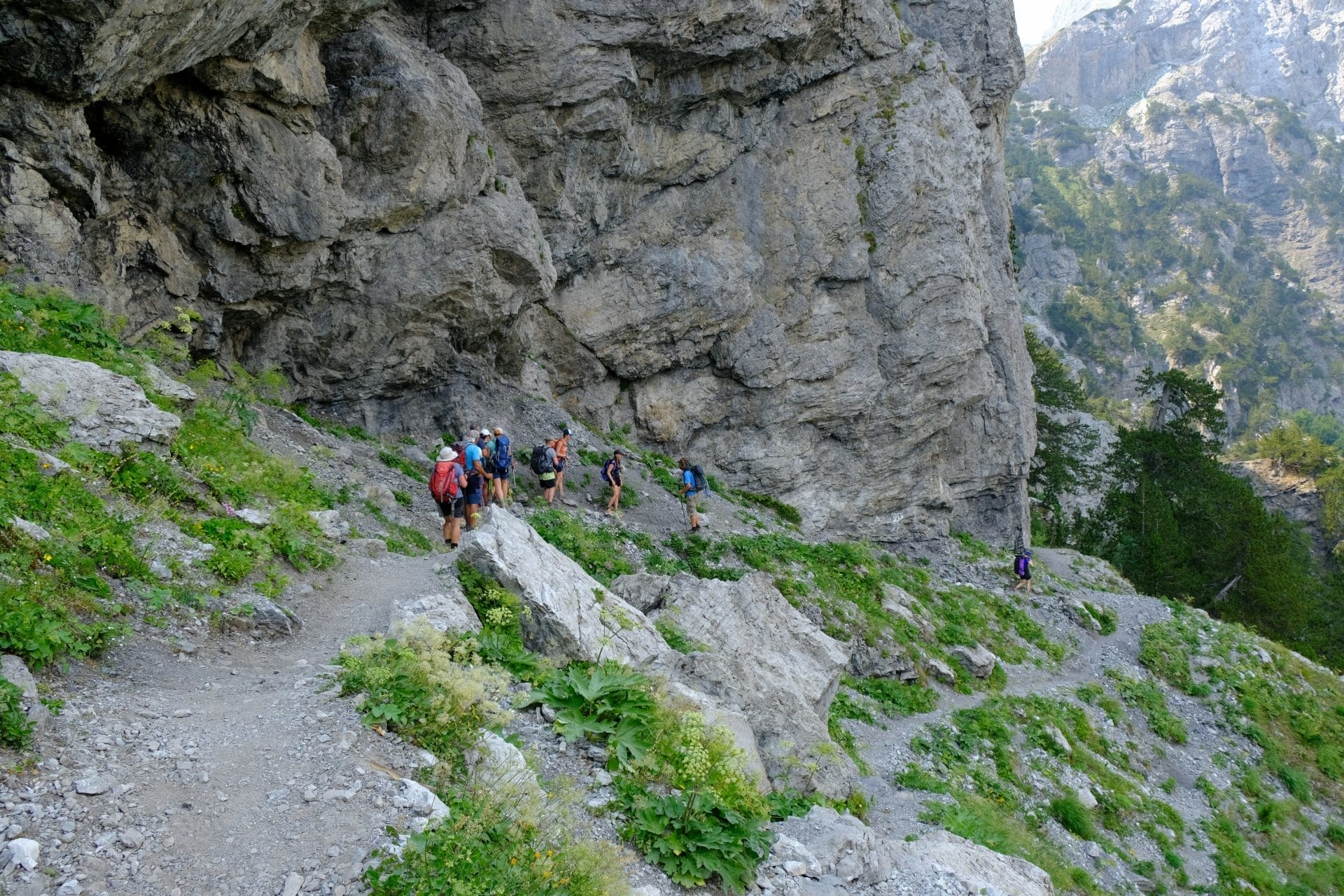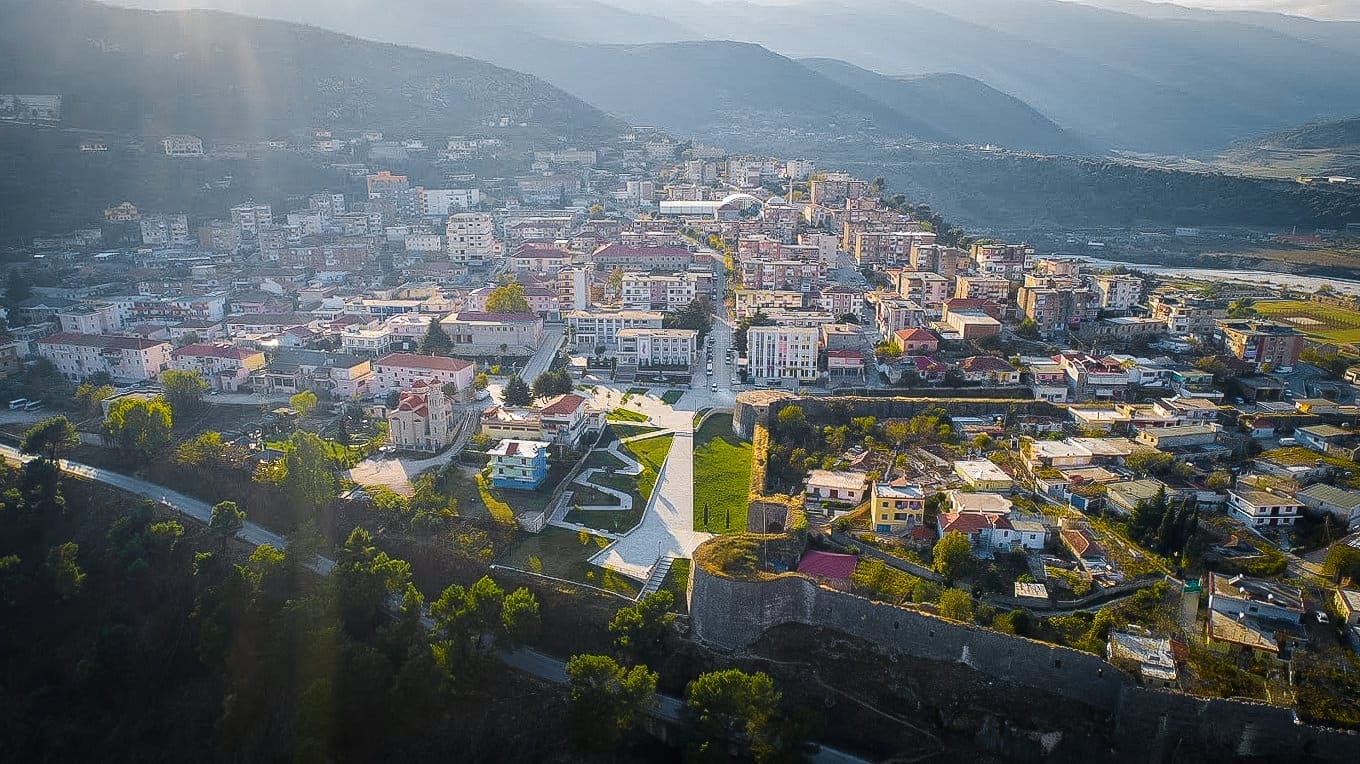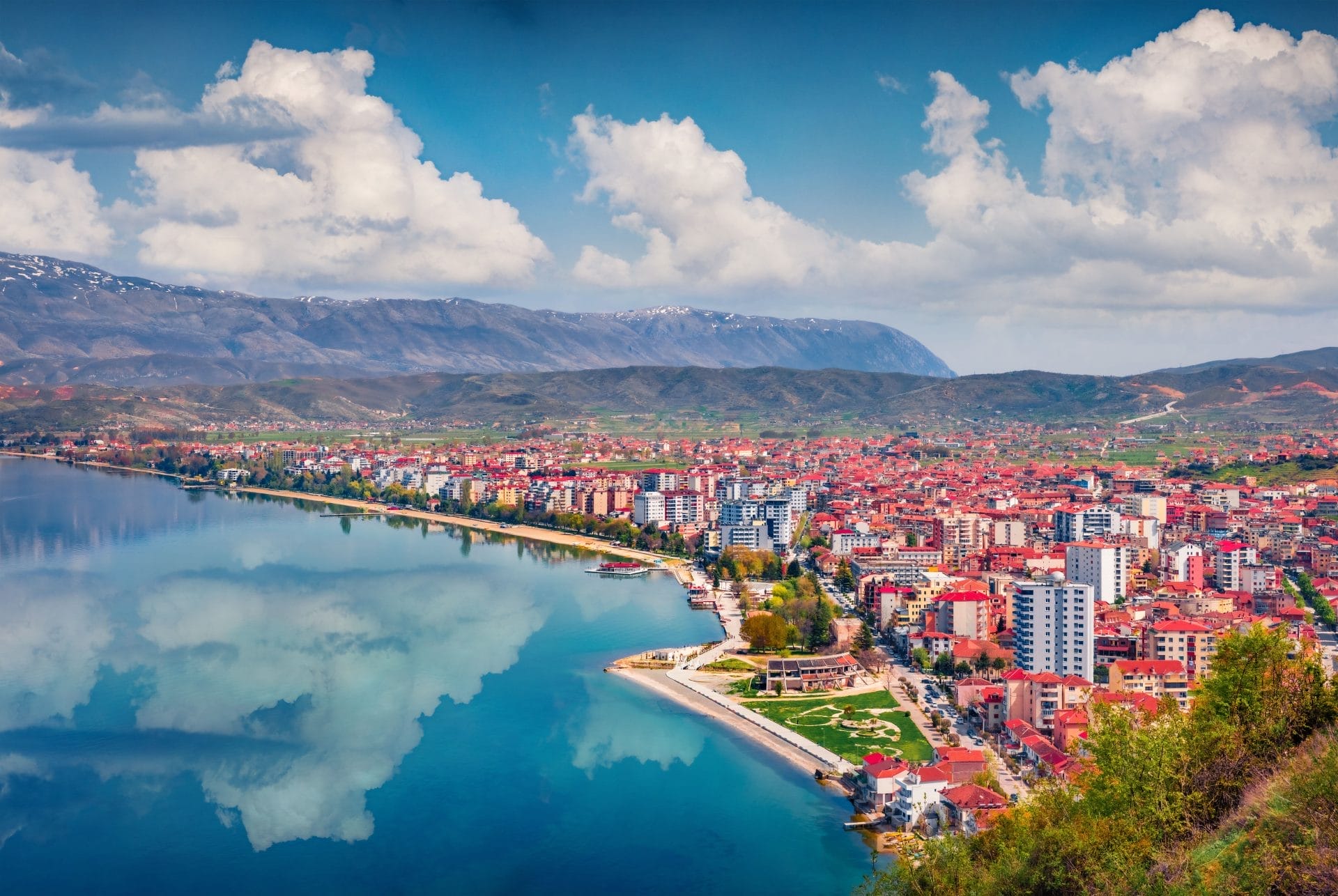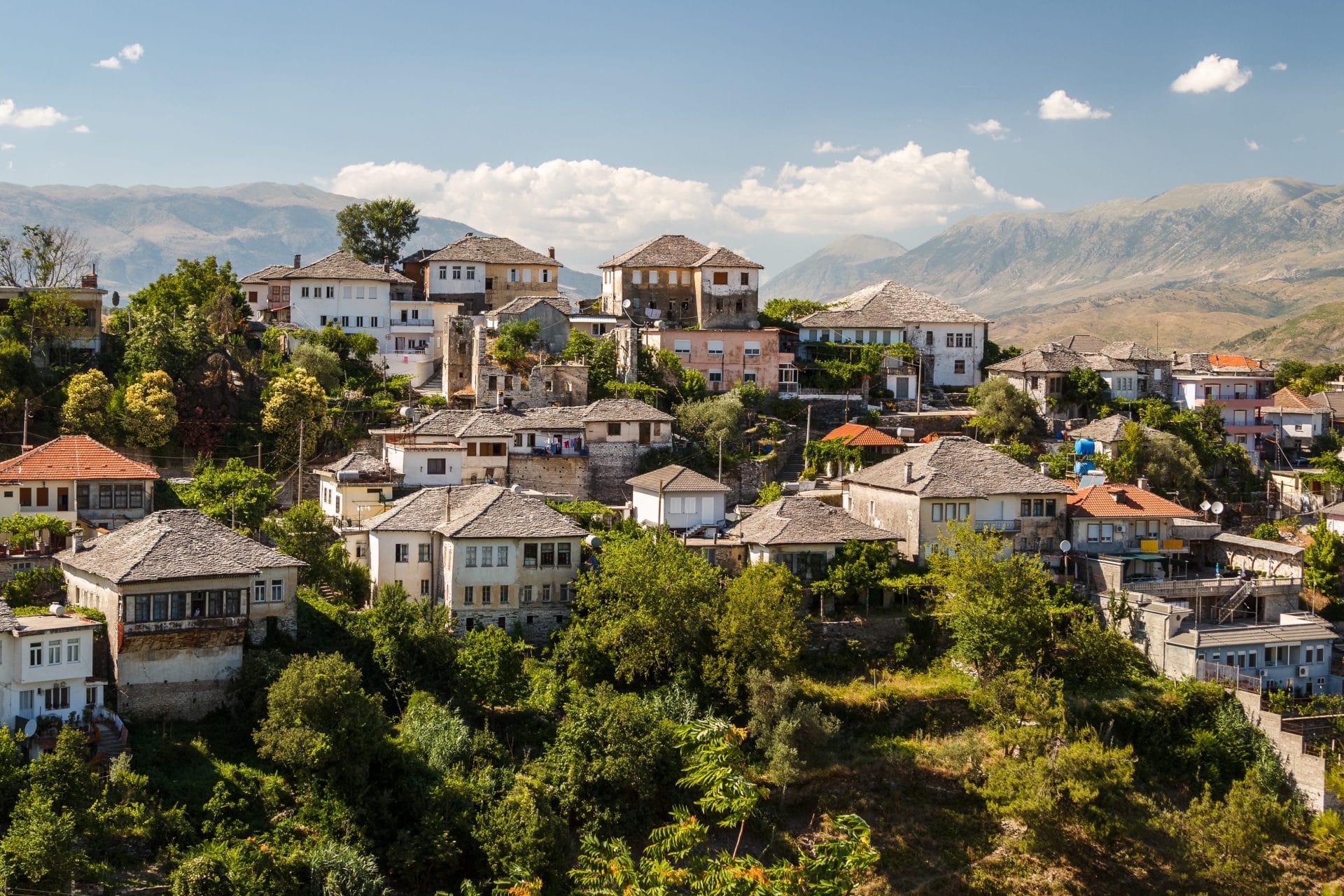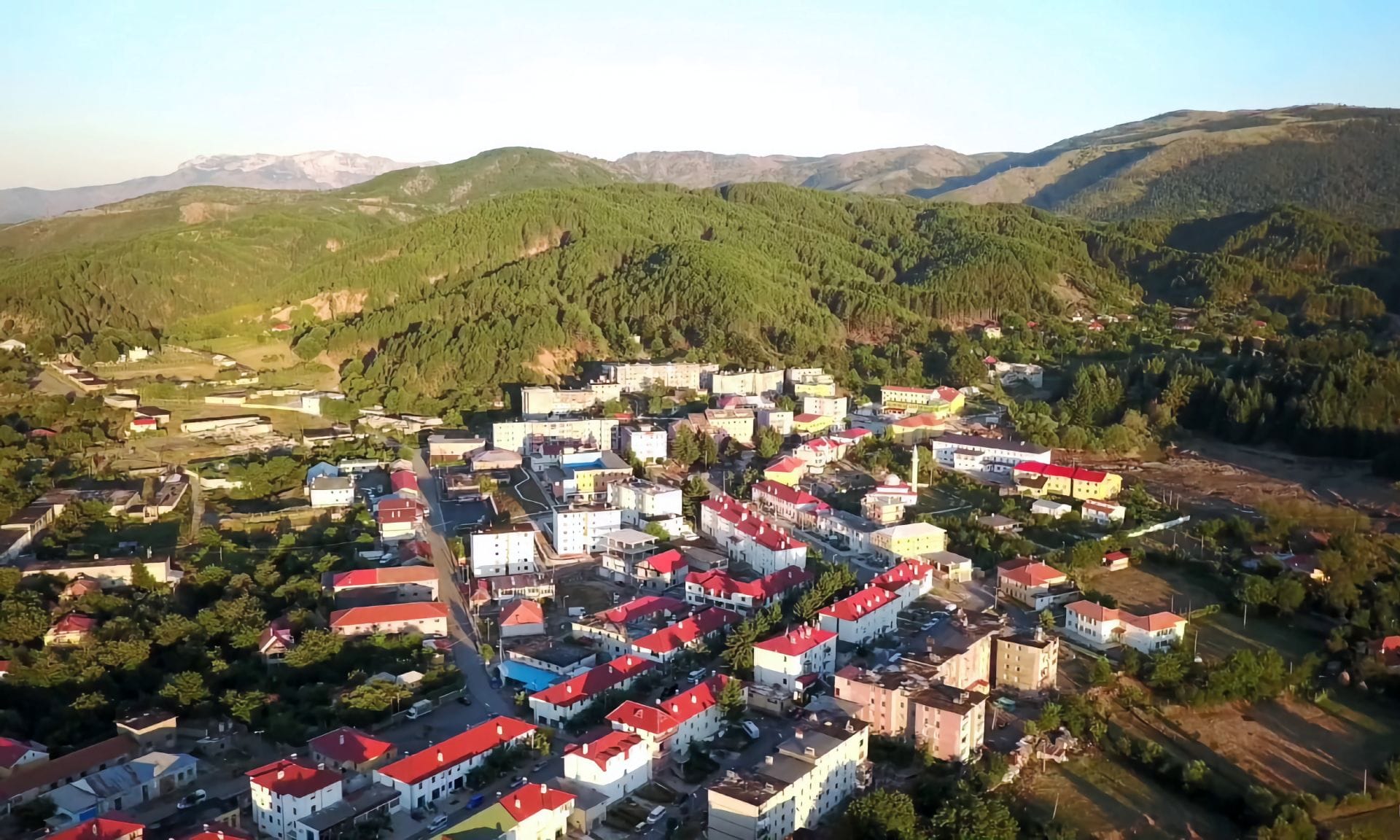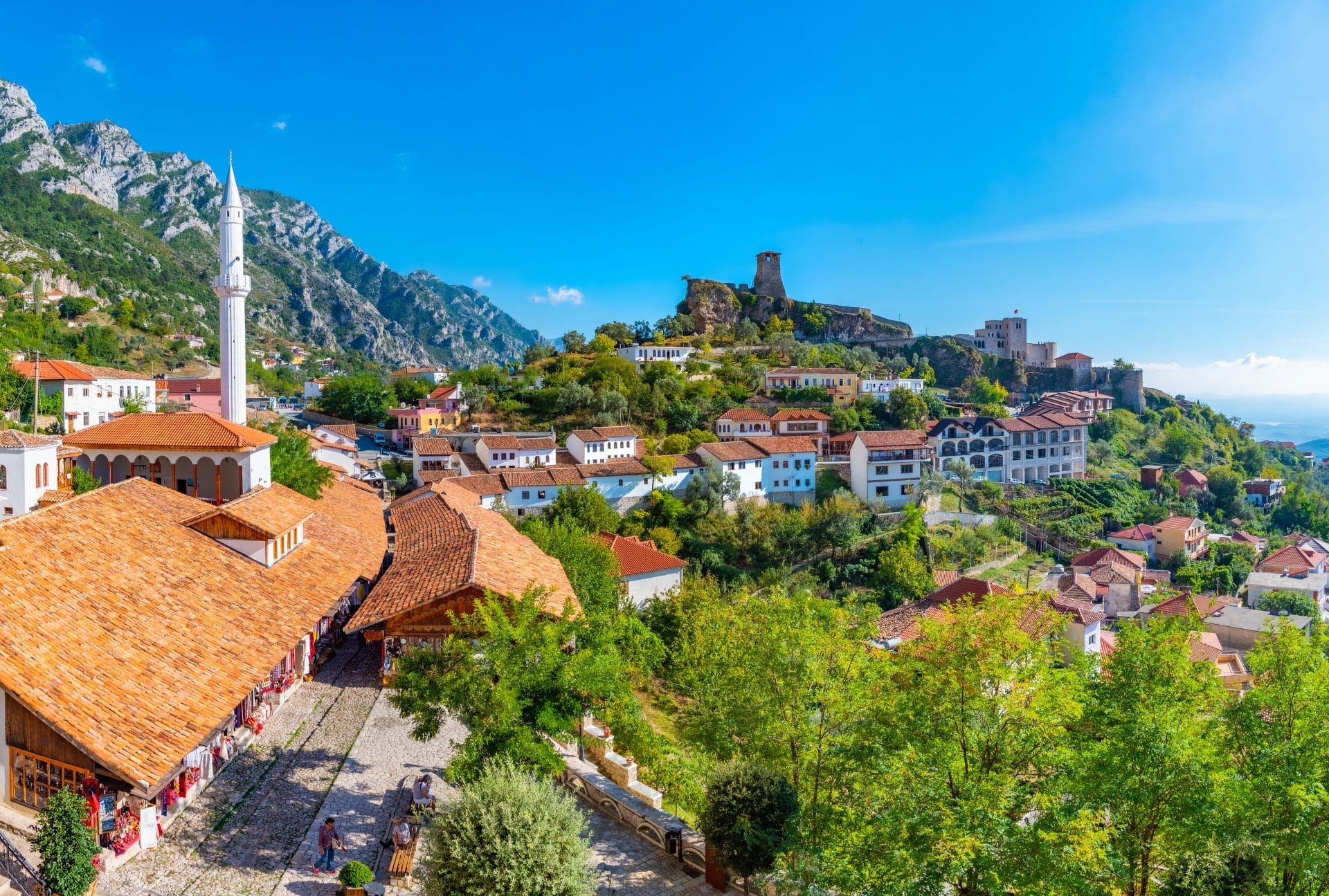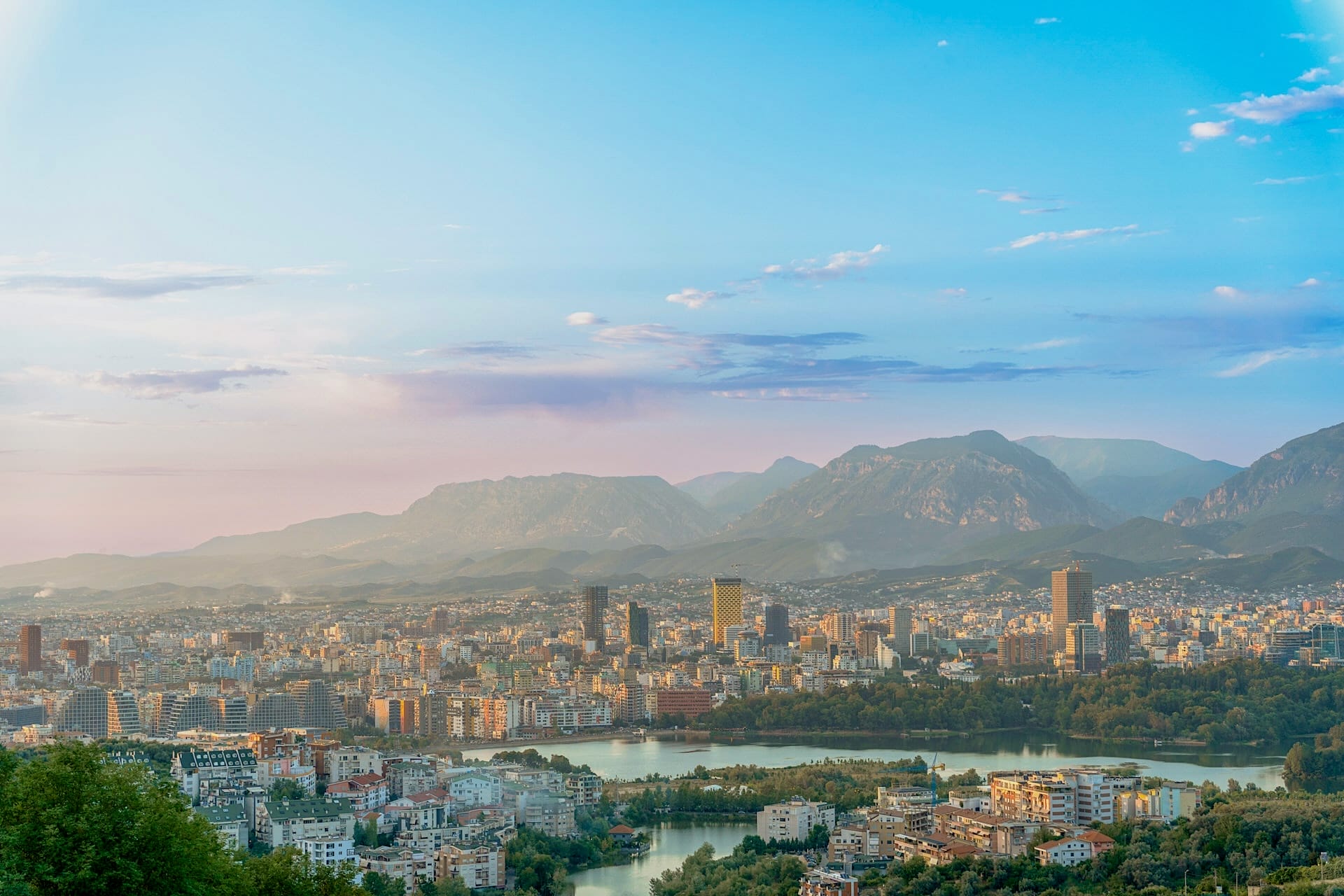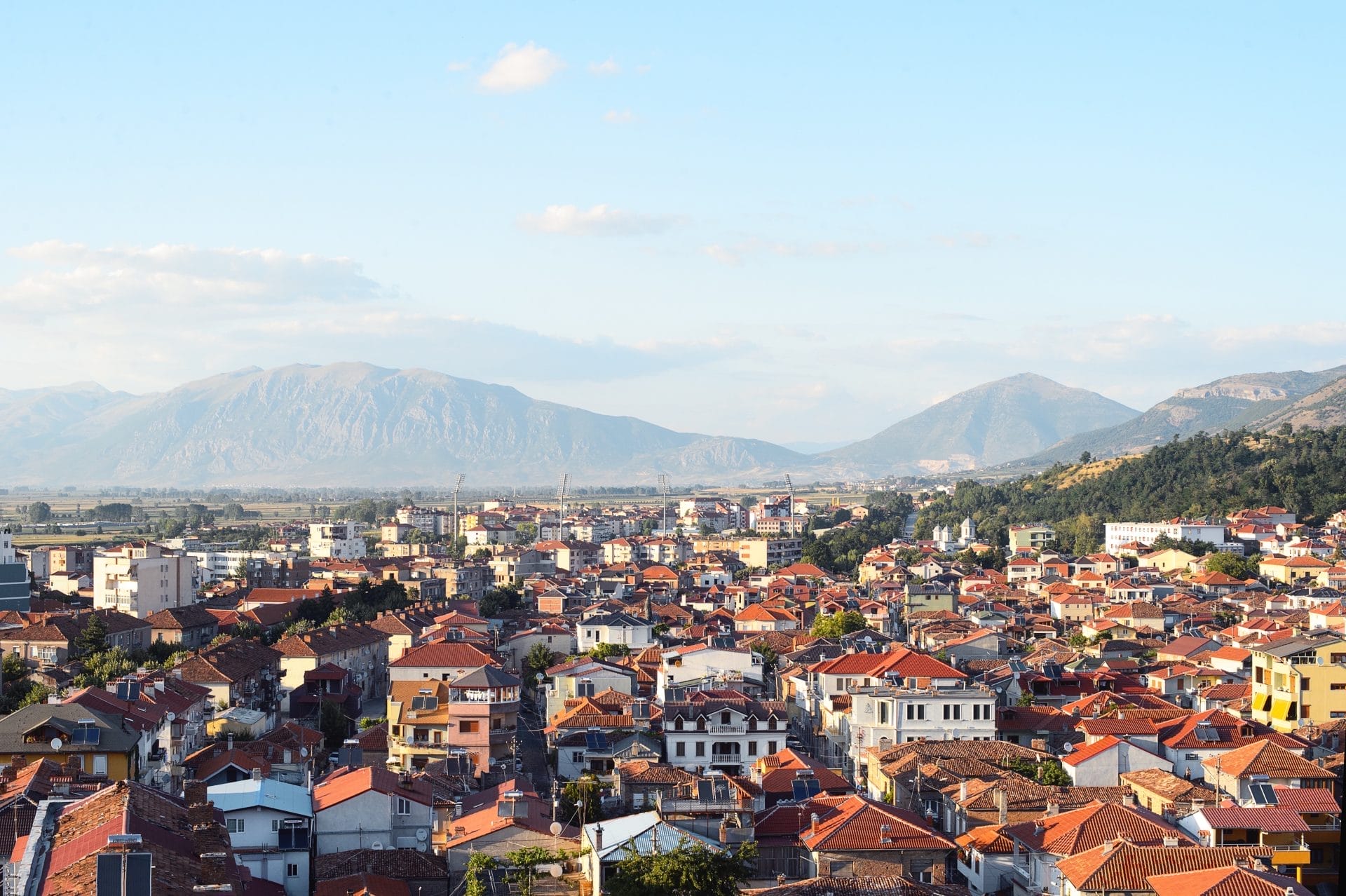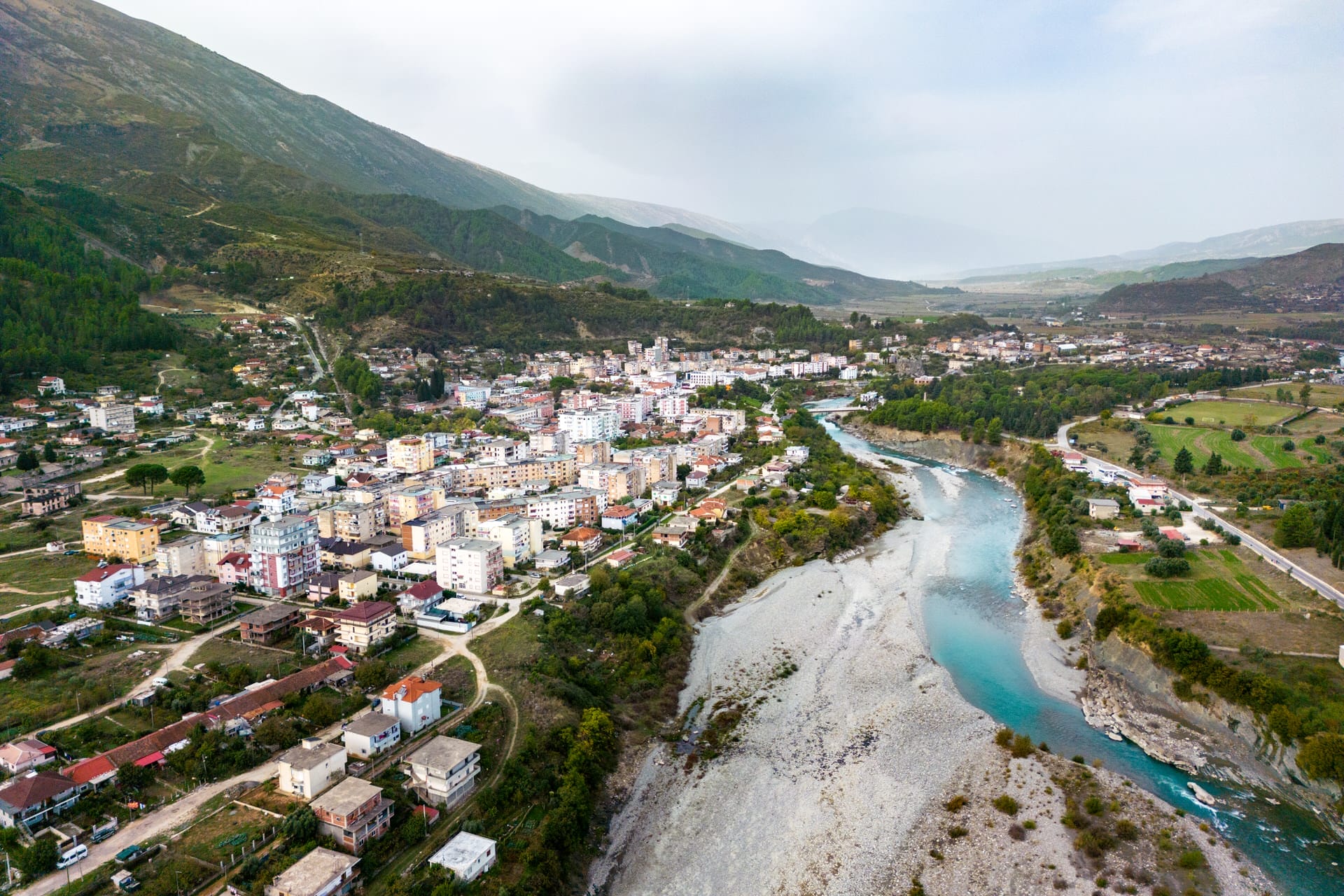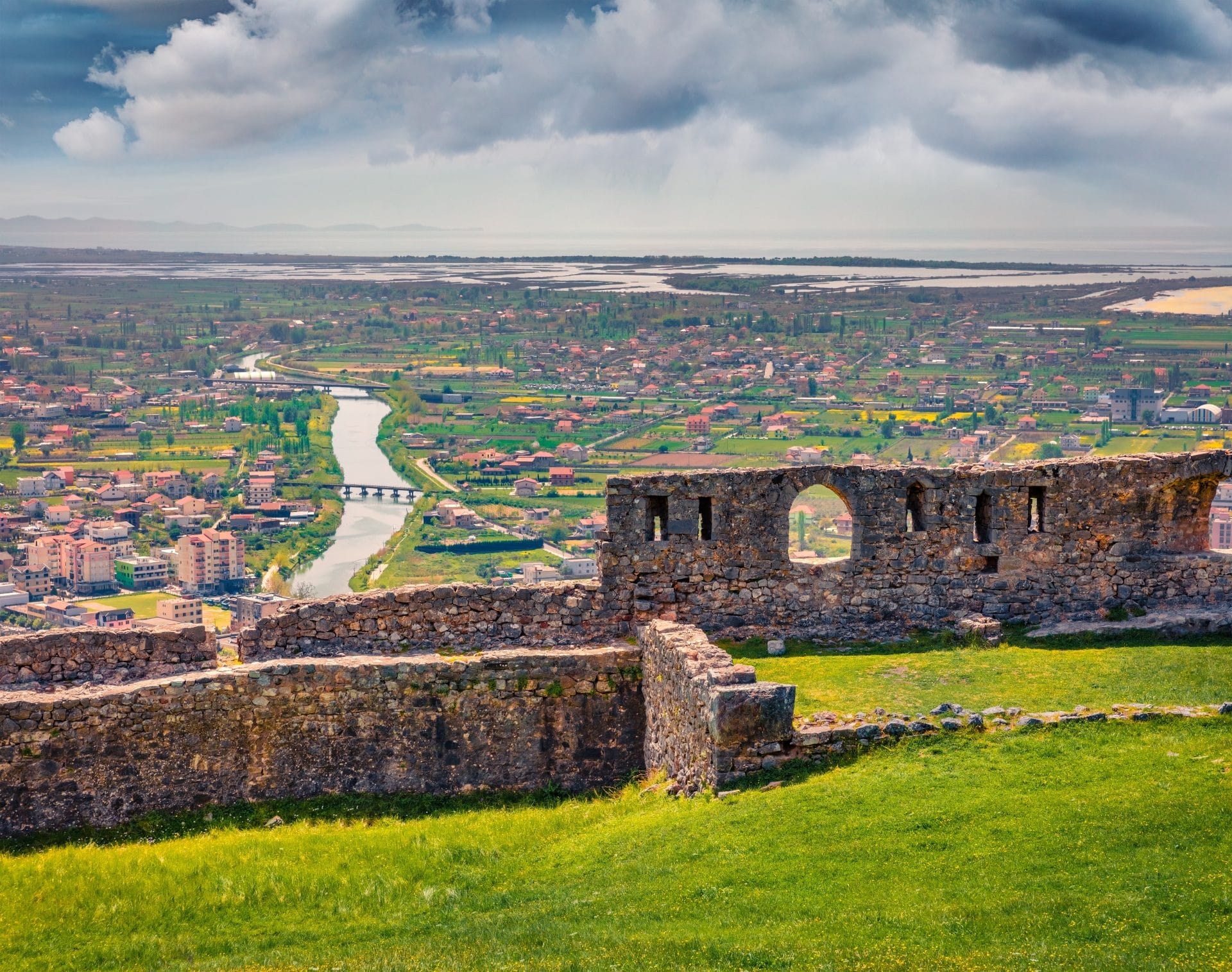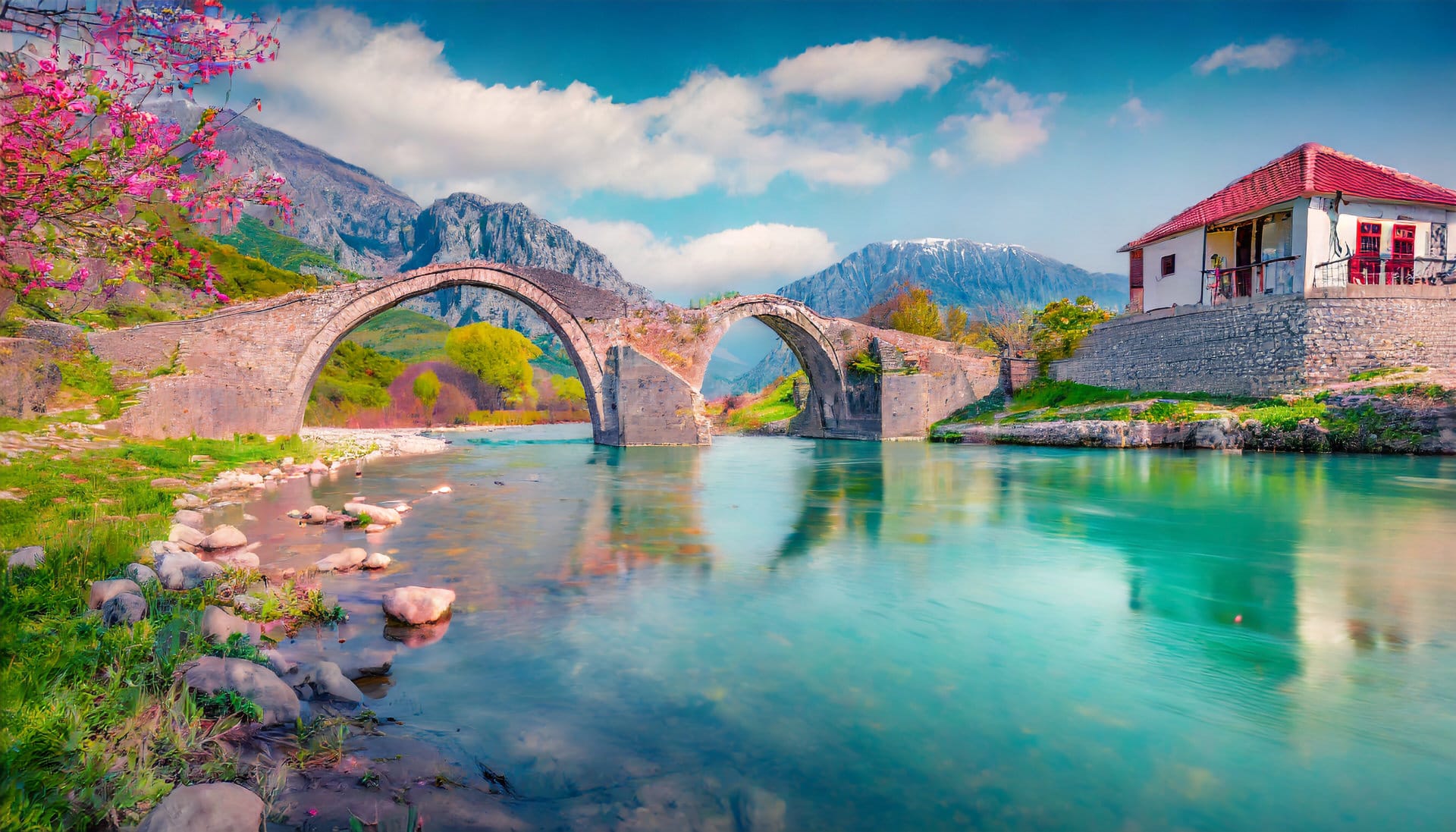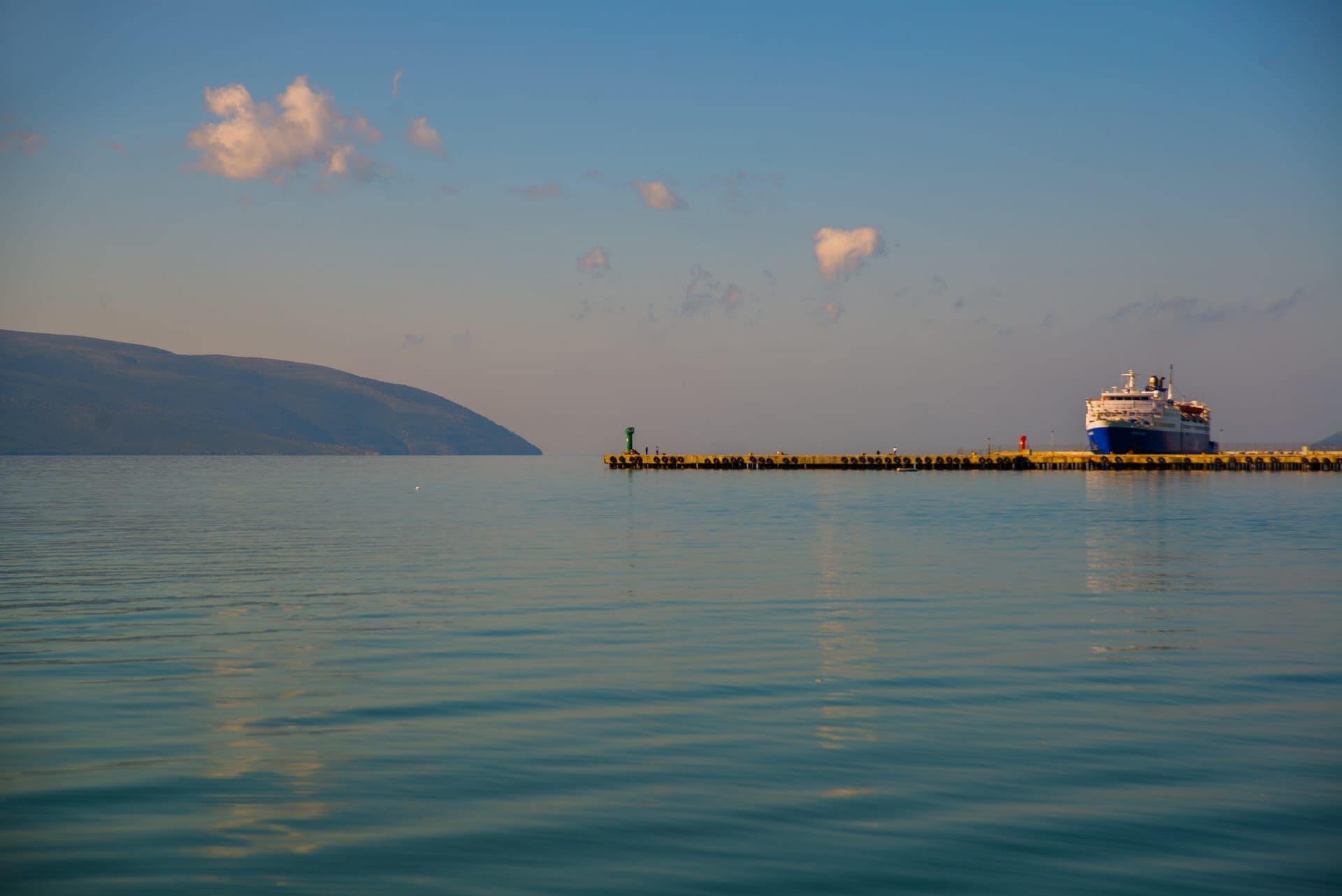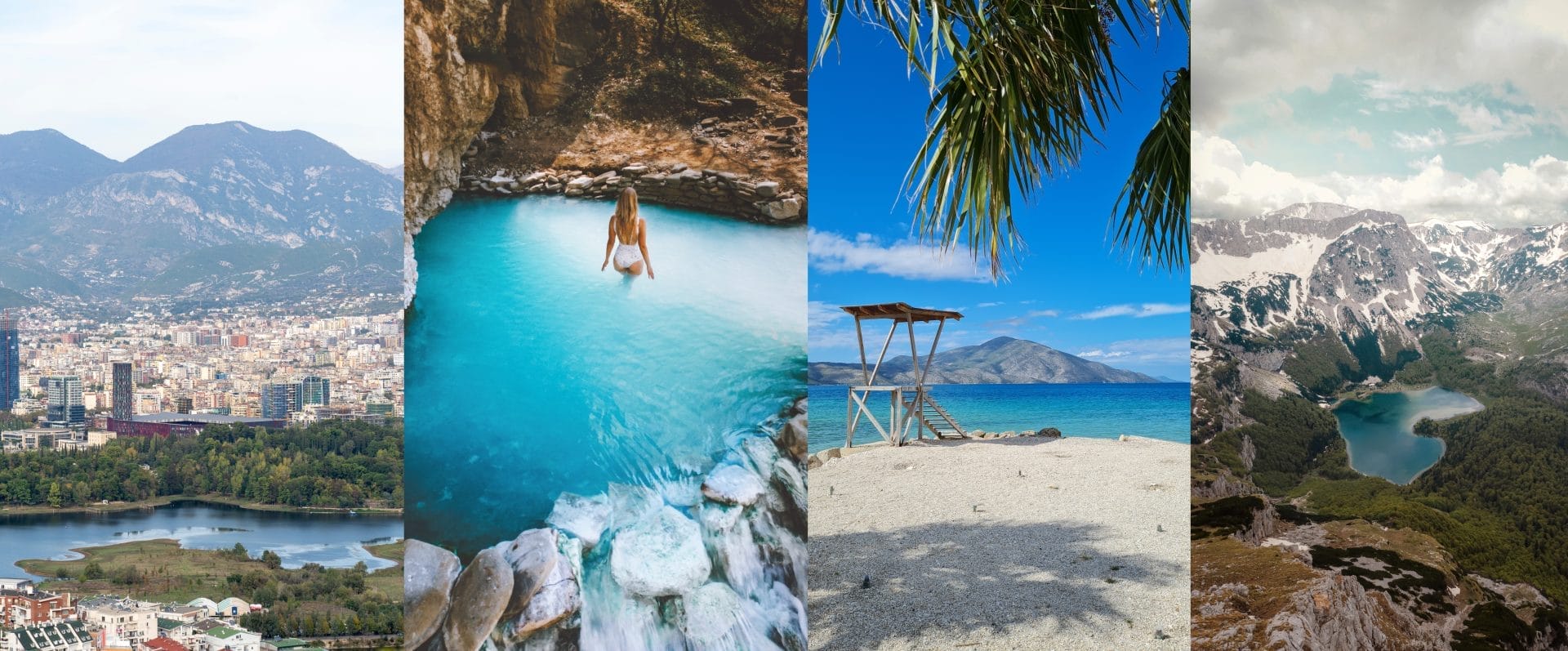
- Journey Into the Past
- Butrint – A Window to Albania’s Ancient Past
- Berat – The City of a Thousand Windows
- The Stone City of Gjirokastra
- The Natural and Cultural Heritage of the Ohrid Region
- The Ancient and Primeval Beech Forest
- On UNESCO’s Tentative List
- UNESCO World Heritage
- Cultural Significance of Albania
- Your Turn to Visit
Journey Into the Past
First is the ancient city of Butrint, a living relic bearing traces of the many civilizations that have graced its lands over the millennia.
Next are the historic cities of Berat and Gjirokastra, exemplifying architectural brilliance as they preserve Albania’s Ottoman heritage.
Then there’s the pristine million-year-old Lake Ohrid region, a harmonious blend of natural beauty and human history along the Albanian-Macedonian border.
Finally, we’ll explore the ancient and primeval beech forests, which provide a sanctuary of biodiversity and natural beauty within their quiet mountain valleys.
Butrint – A Window to Albania’s Ancient Past
On a tranquil hillside overlooking the Vivari Channel, Butrint offers 2,500 years of history in one magical spot.
Walking among the evocative ruins, you can almost hear echoes of the Greeks, Romans, Byzantines, and Ottomans who once called Butrint home.
The site invites you to immerse yourself in each era. Climb to the top rows of the 3rd century BC theatre for panoramic views.
Stroll through the intricate mosaic floors of a 6th-century basilica.
Reflected in the paleochristian baptistry that later became part of a church.
Don’t miss the medieval castle and defense tower from Butrint’s Venetian period.
Butrint encapsulates Albania’s layered history, earning its place as the country’s first UNESCO World Heritage Site in 1992.
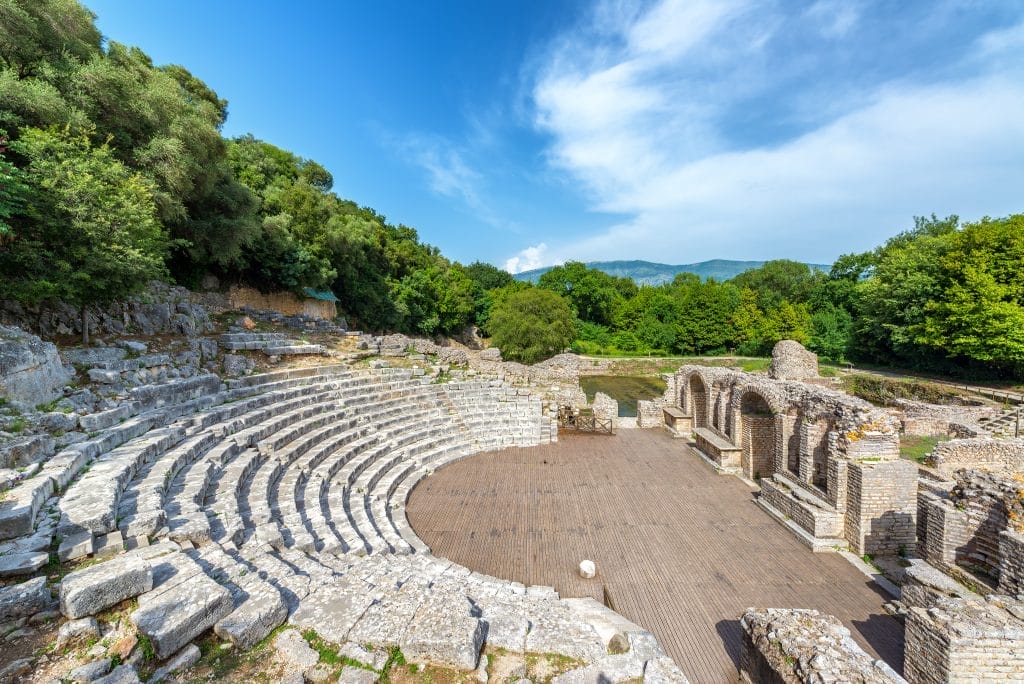
Berat – The City of a Thousand Windows
The alluring hillside town of Berat transports you to Albania’s Ottoman past.
Its remarkably intact architecture earned it UNESCO World Heritage status in 2005, together with Gjirokastra.
In Berat, the white-walled Mangalem neighborhood clusters around the 15th-century Sultan’s Mosque next to the Osum River.
Don’t miss the seven-arched Gorica Bridge spanning the river, built in the 14th century.
Just beyond lies the ancient hilltop citadel gazing down over red-tiled roofs.
Exploring the cobbled lanes of Berat’s historic quarters reveals the enduring beauty of craftsmanship from centuries past.
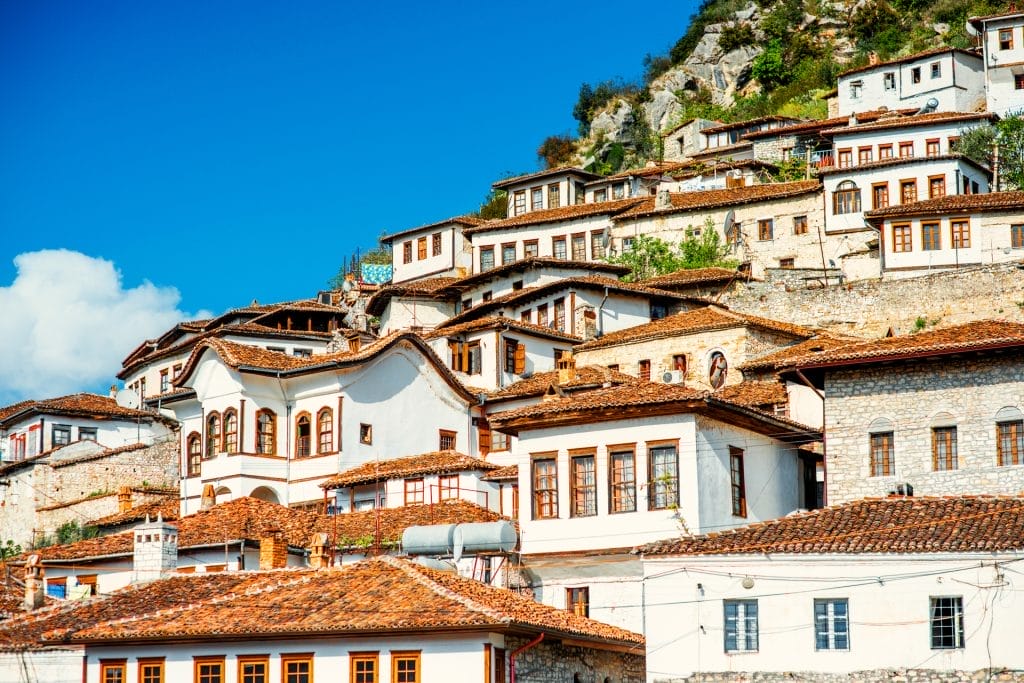
The Stone City of Gjirokastra
One of my favorite cities in Albania and my grandmother’s hometown, Gjirokastra, hides its Ottoman-era treasures behind an imposing hillside fortress.
Its formidable yet elegant citadel earned it UNESCO recognition alongside Berat in 2005.
Inside the fortress walls, discover a centuries-old bazaar and 18th-century church.
The audacious location makes the castle visible throughout the town below.
As you wander past the Ottoman-style houses, they grow organically from the rocky slopes.
Gjirokastra represents an architectural and cultural jewel that beautifully withstands the passage of time.
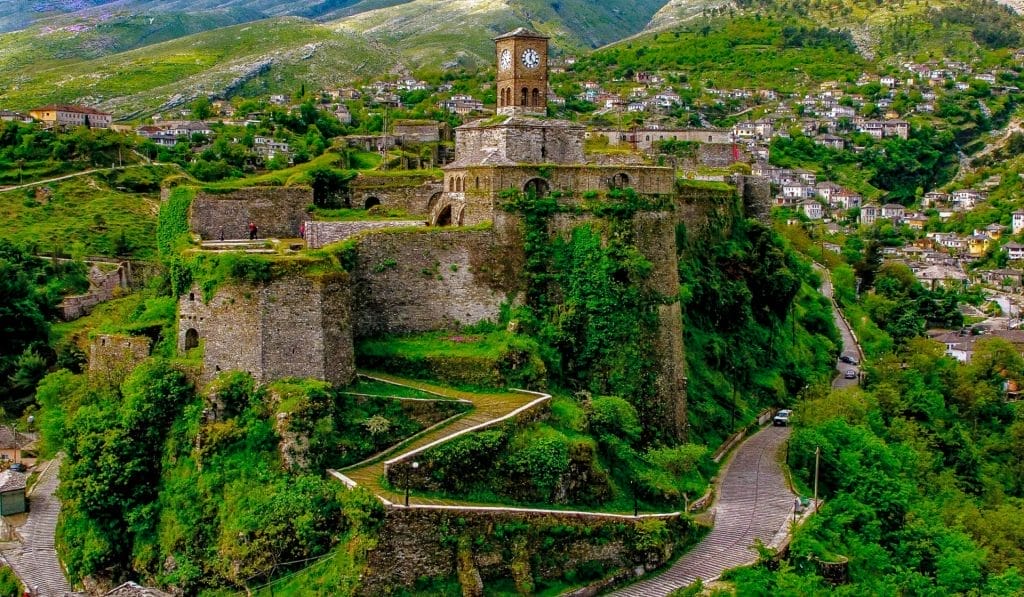
The Natural and Cultural Heritage of the Ohrid Region
Few settings rival the crystalline blue waters of Lake Ohrid, shared between Albania and North Macedonia.
This pristine lake has supported over 200 species of plants and animals since ancient times, earning its UNESCO recognition.
Moreover, the area around Ohrid formed an important crossroads between civilizations for millennia.
The region around Pogradec in Albania was inhabited by Illyrians in the 5th century BC, followed by Romans along the Via Egnatia trade route.
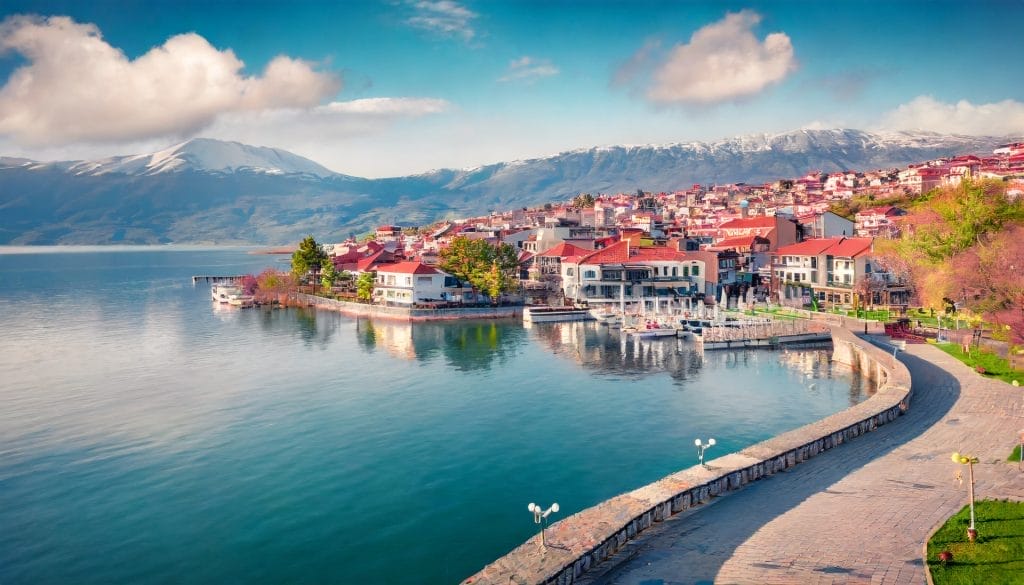
The ruins of a paleo-Christian church and floor mosaics point to the spread of early Christianity here.
The later growth of Pogradec in the 19th and 20th centuries showcases Albanian vernacular architecture.
On the Macedonian side, don’t miss the 10th-century St. Naum Monastery.
Its exquisite Byzantine frescoes watch over the lakeside from above.
Walking the trails around the monastery with Lake Ohrid views perfectly showcases Albania’s harmony of culture and nature.
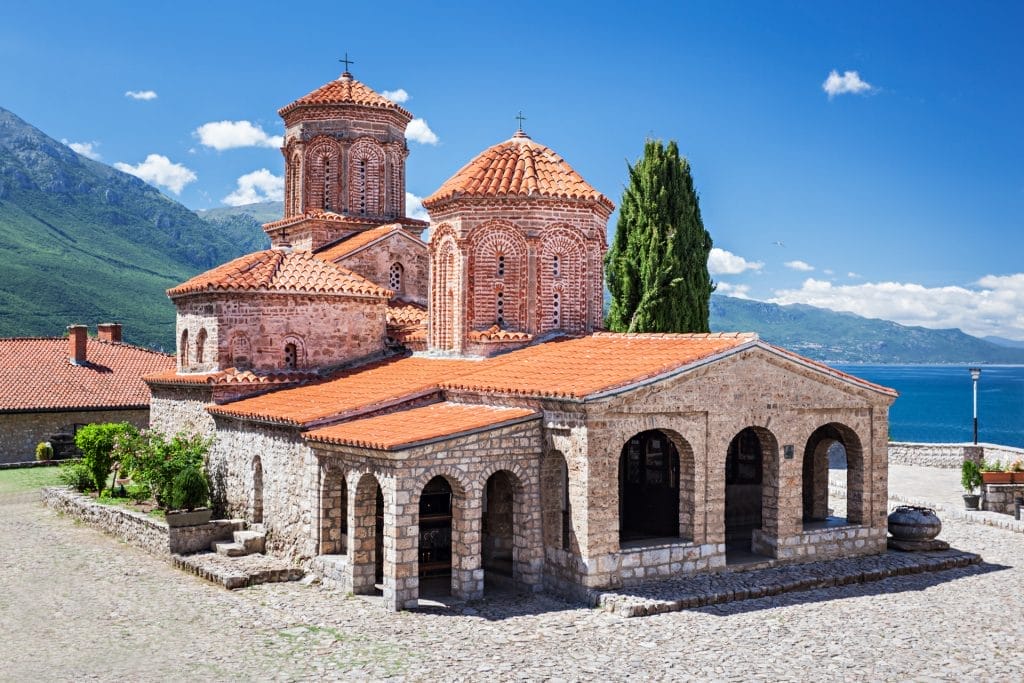
The Ancient and Primeval Beech Forest
As we venture north, we encounter Albania’s ancient and primeval beech forests, an integral section of the UNESCO World Heritage Site of the Ancient and Primeval Beech Forest of the Carpathians.
Lush beech forests once dominated Europe’s landscape before industrialization.
Fortunately, Albania still harbors pockets of ancient beech woodlands in the mountain ranges bordering Montenegro and Macedonia.
The Gashi River valley in Albania’s Tropojë district contains magnificent beech forests untouched for millennia.
These secluded woodlands protect rare flora and fauna, while revealing the expansive history of primeval forests across Europe.
A hike through these beech woodlands reveals diverse flora and fauna, many found nowhere else.
The fresh mountain air and sunlight streaming through branches awaken your senses.
You’ll emerge reconnected with nature, understanding why the conservation of these ancient forests matters.

On UNESCO’s Tentative List
Besides its four inscribed World Heritage sites, Albania maintains a tentative list of future nomination candidates.
The ancient city of Apollonia represents an important archaeological gem spanning the Greek, Illyrian, and Roman eras.
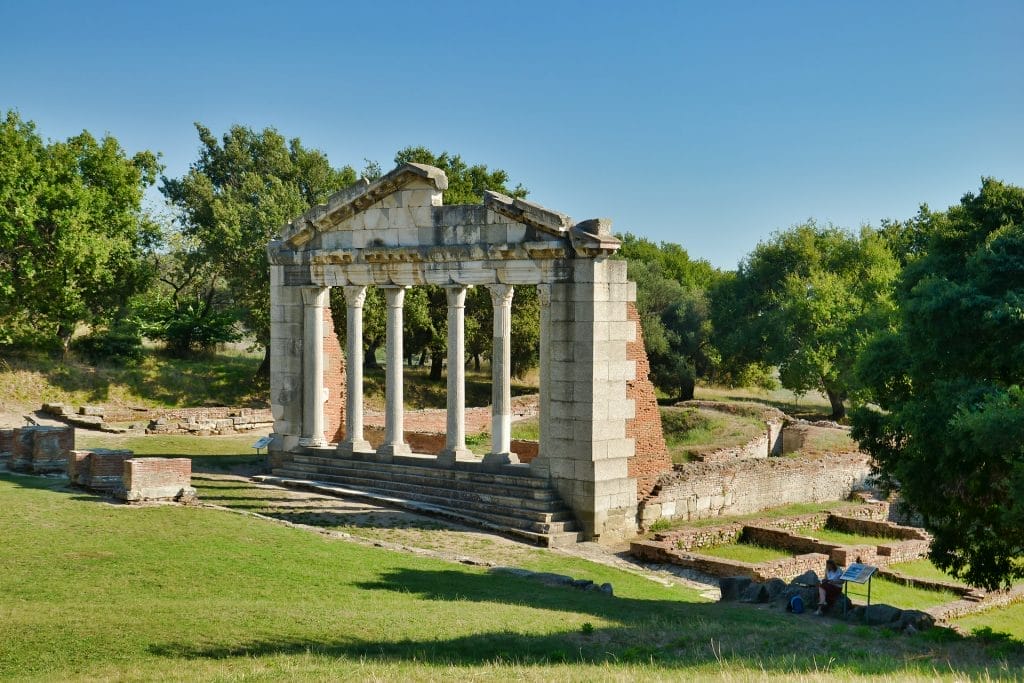
Elsewhere, the Royal Illyrian Tombs of Selca e Poshtme contain over 20 well-preserved tombs built for aristocracy in the 3rd century BC.
For nature lovers, the alpine Valbona Valley and the biodiverse Ceraunian Mountains are both candidates.
Historic cities like Shkodra, Lezhë, the medieval bazaar of Berat, and Petrela Castle round out the list.
Additional candidates include the massive Roman amphitheater of Durrës and the 15th-century Bashtova Castle with its Venetian and Ottoman architectural fusion.
UNESCO World Heritage
Let’s take a moment to understand the essence of the UNESCO World Heritage Site.
Established in 1945, UNESCO fosters international collaboration in education, science, culture, and communication, aiming to foster peace and security through mutual understanding and respect for diverse cultures.
Since 1972, it has been identifying and protecting places of exceptional value to humanity, promoting sustainable development, and fostering cultural exchange and understanding.
With its intricate history dating back to ancient times, Albania has embraced influences from the Illyrians, Romans, Byzantines, and Ottomans.
This rich historical background has given Albania a unique blend of cultural influences and architectural styles.
As we explore Albania’s UNESCO World Heritage Site, we venture into a realm where history and nature merge, offering a glimpse into the country’s vibrant past and commitment to preserving its heritage for future generations.
Cultural Significance of Albania
Albania has a long and intricate history that dates back to ancient times.
Various civilizations, including the Illyrians, Romans, Byzantines, and Ottomans, have influenced it, reflected in its vibrant folklore, traditional music, and unique culinary traditions.
This diverse historical background has left Albania with a unique blend of cultural influences and architectural styles.
It offers a captivating glimpse into its past, from ancient Illyrian ruins to medieval castles and Ottoman-era mosques.
Throughout its history, Albania has faced challenges such as invasions, occupations, and isolation.
However, in recent decades, the country has made significant progress in preserving its heritage, making it an increasingly popular destination for travelers seeking an authentic and enriching experience.
Your Turn to Visit
UNESCO recognition is vital for preserving Albania’s cultural legacy.
But these heritage sites do more than garner protection – they vividly share Albania’s rich history with visitors.
Walking amongst millennia-old ruins or wandering cobblestone Ottoman streets brings the past to life.
It’s an engaging experience that provides a window into Albania’s role as a crossroads of civilization.
From Albania’s ancient roots to its abundance of natural gifts, experiencing its World Heritage sites creates moments of insight to last a lifetime.

